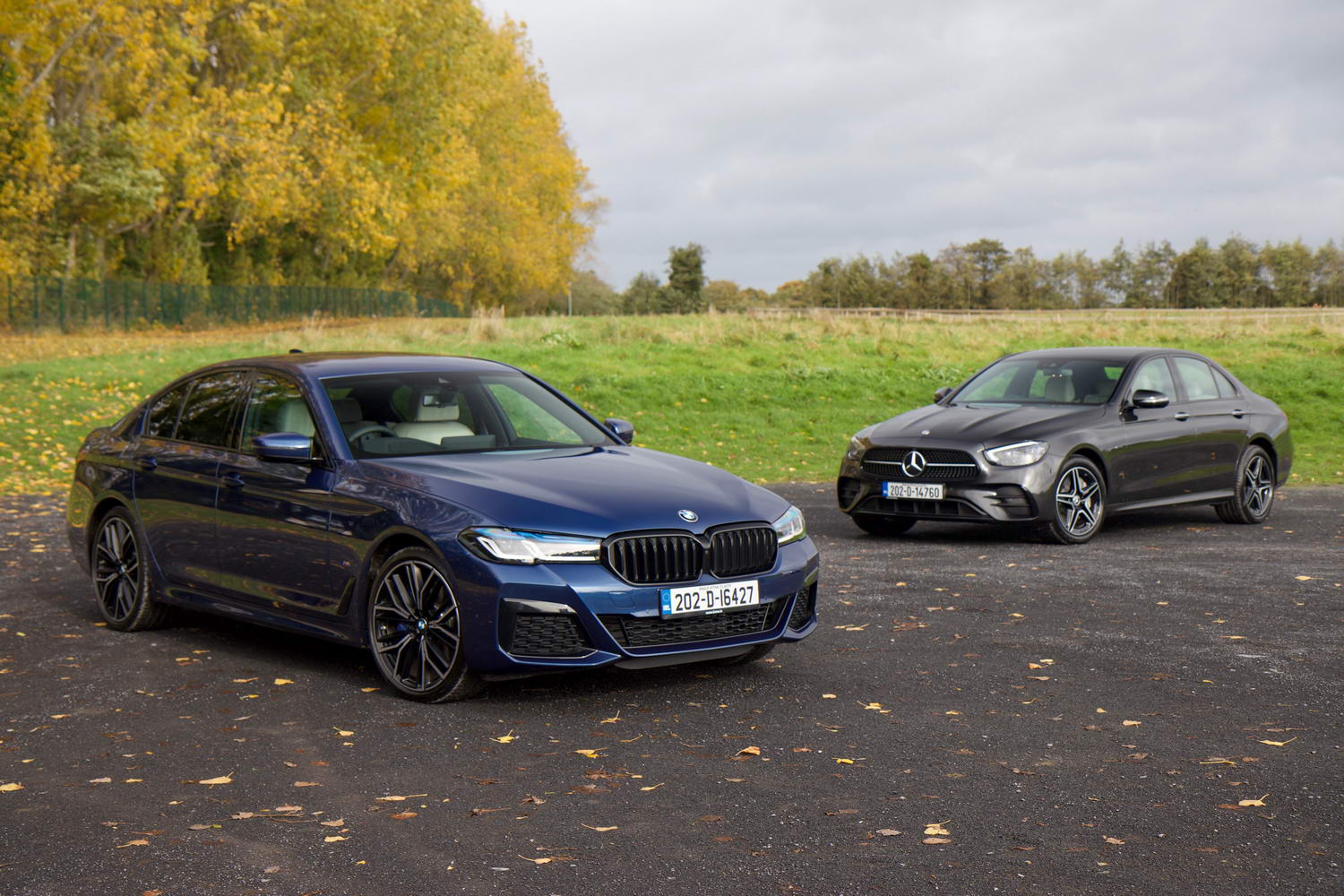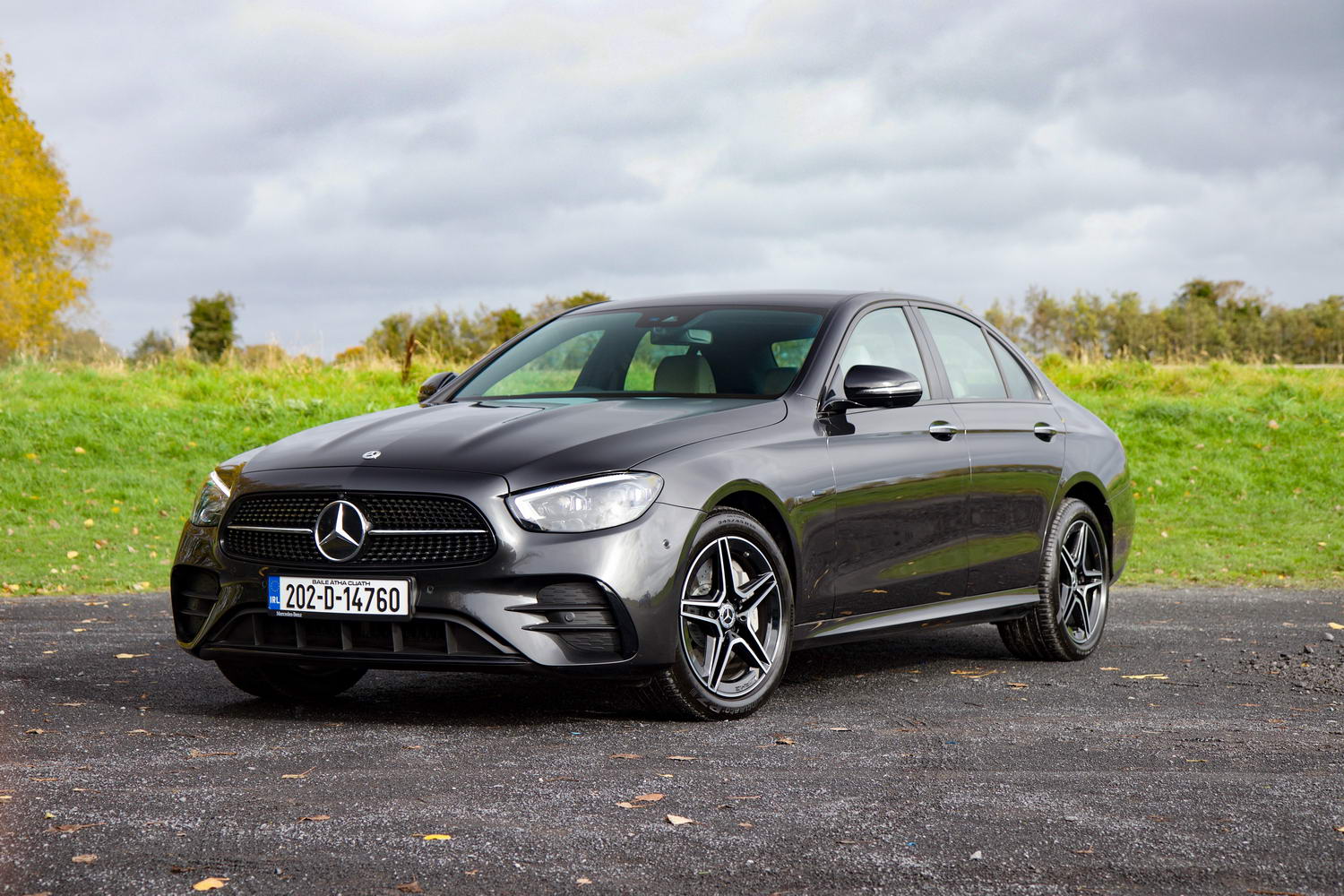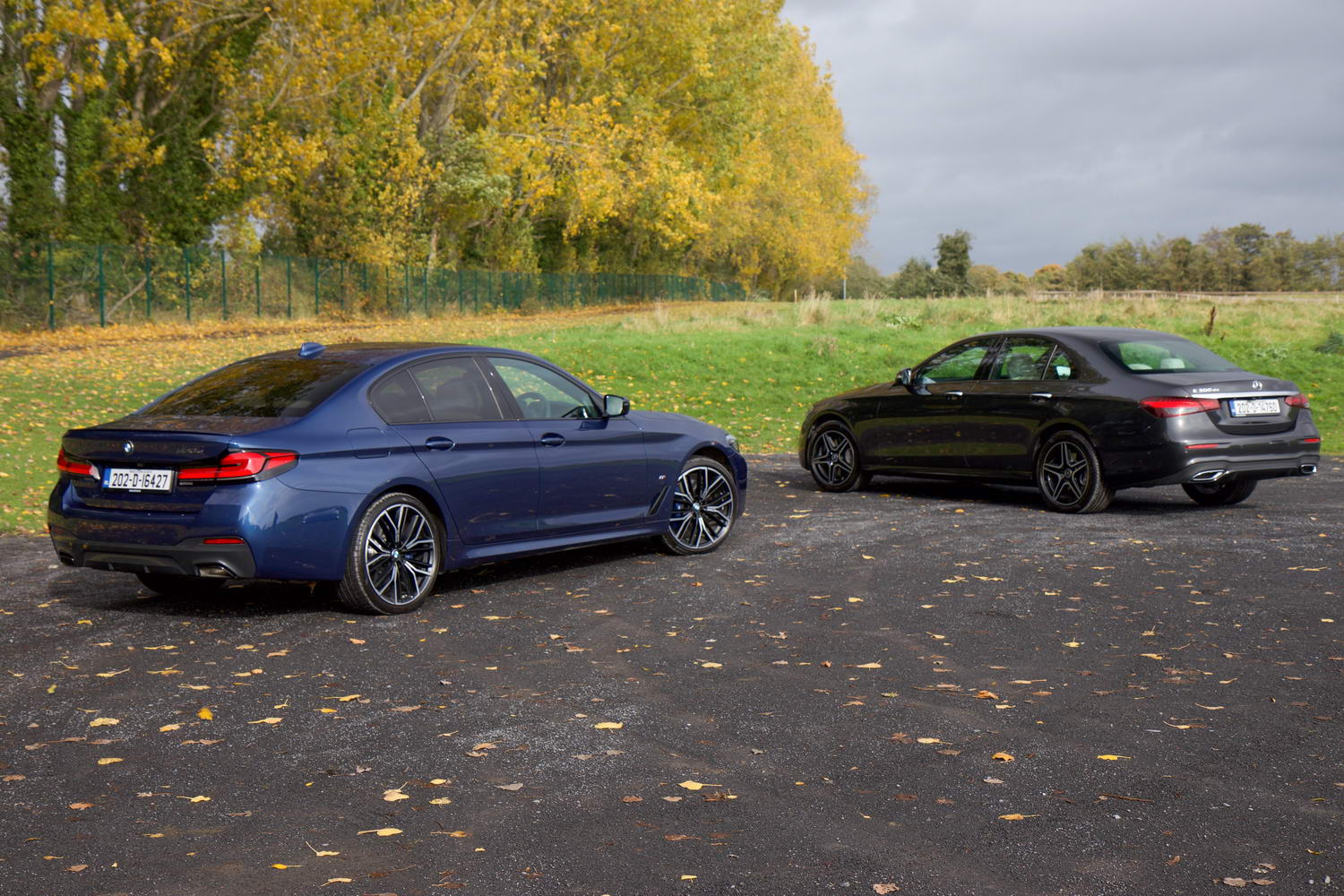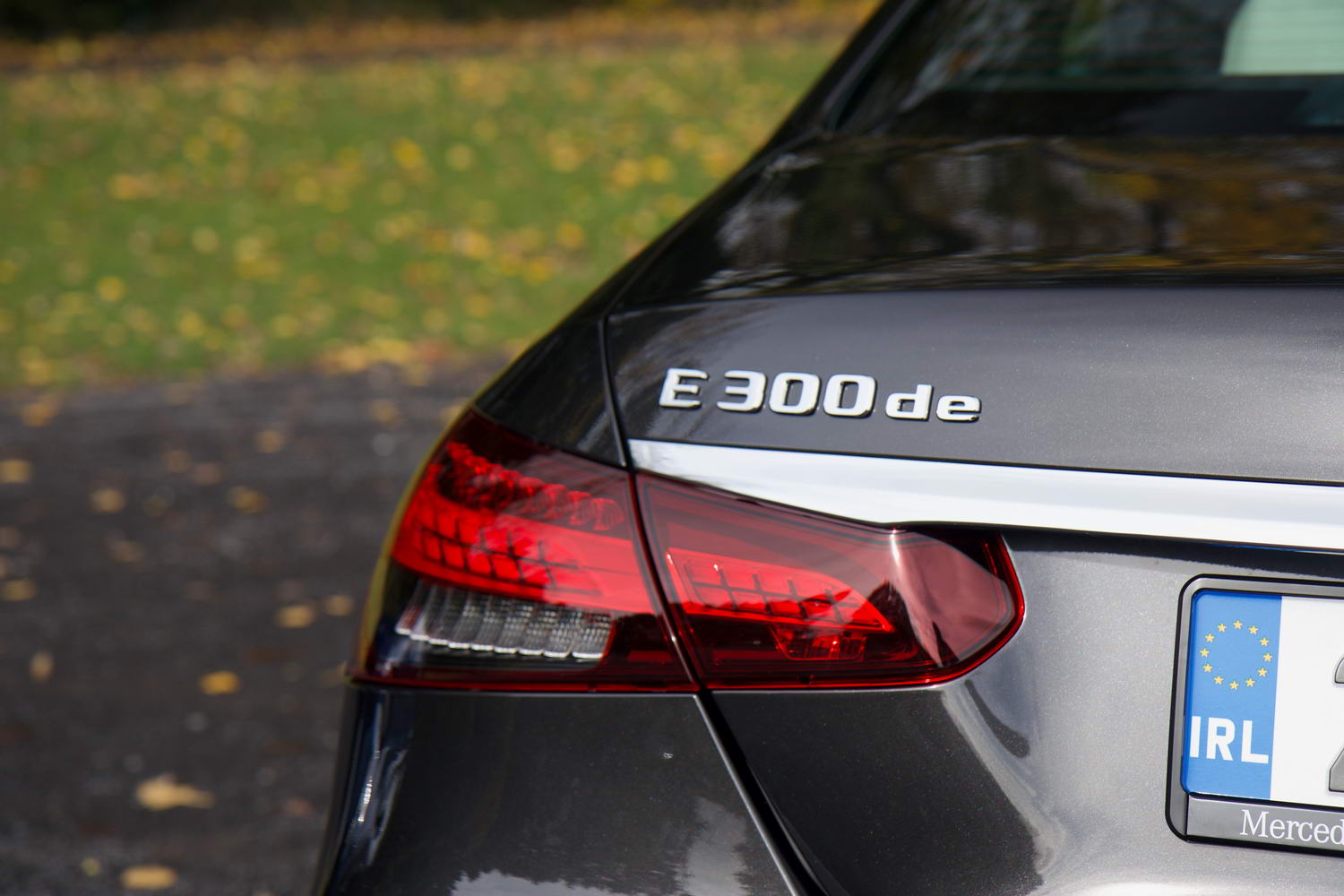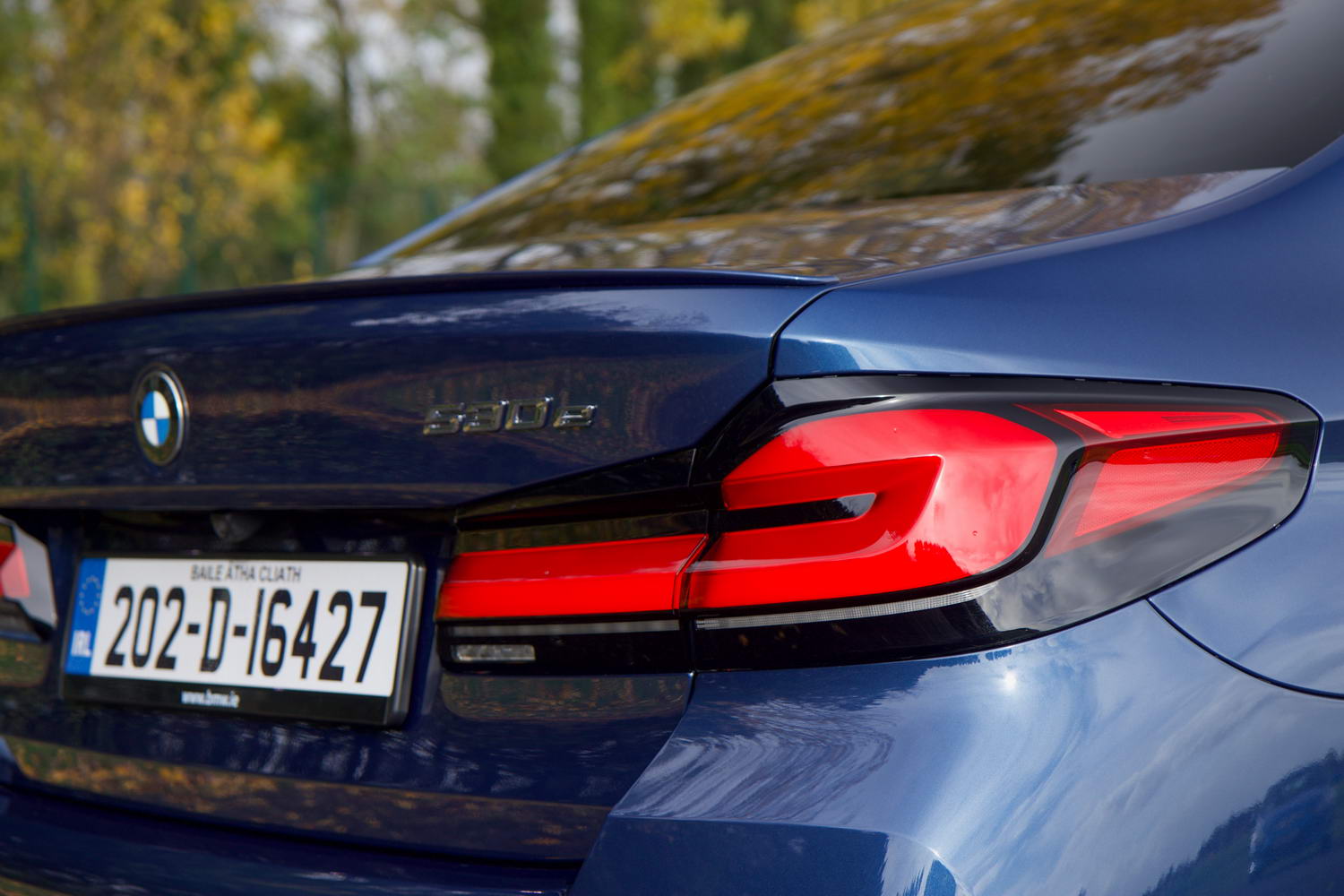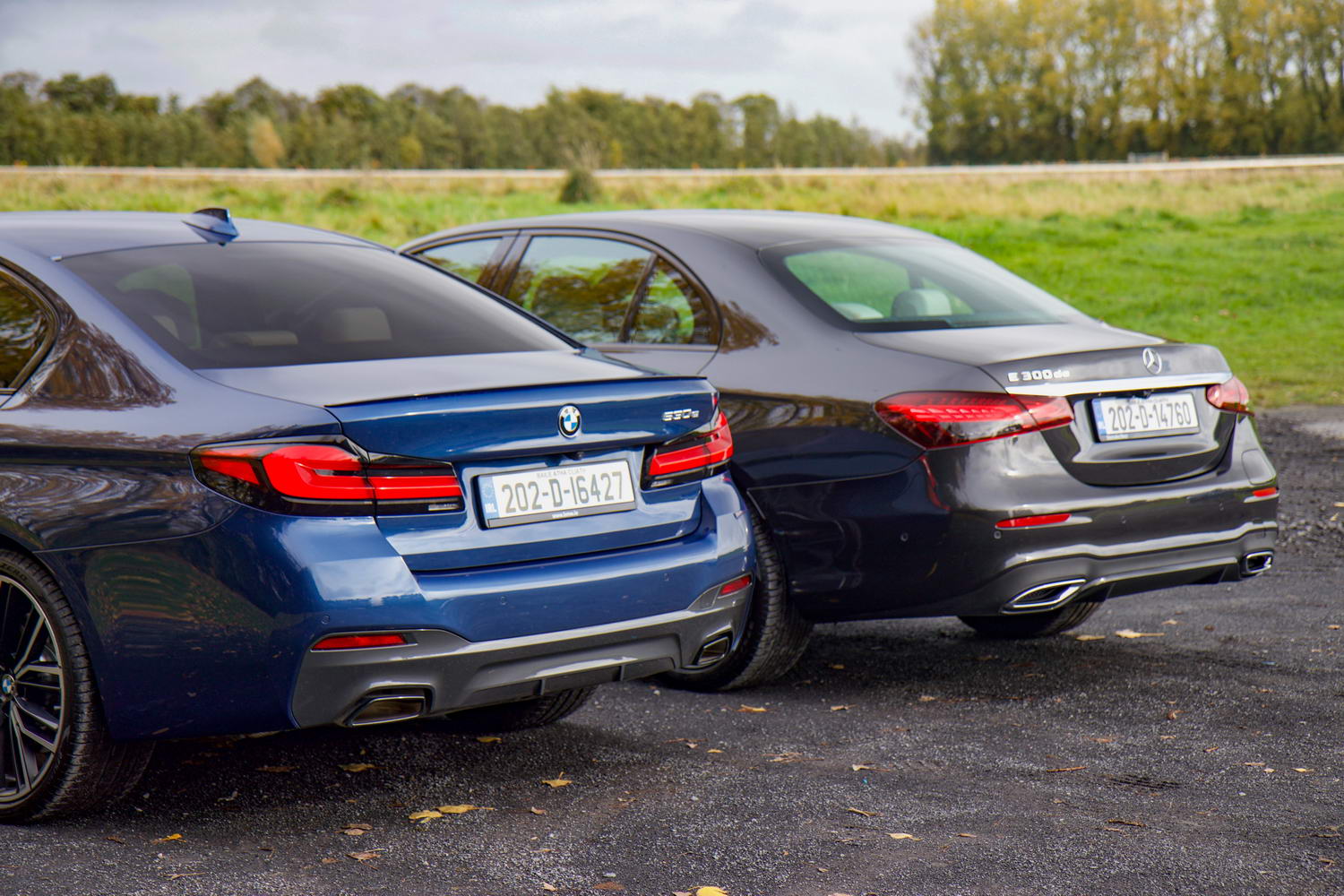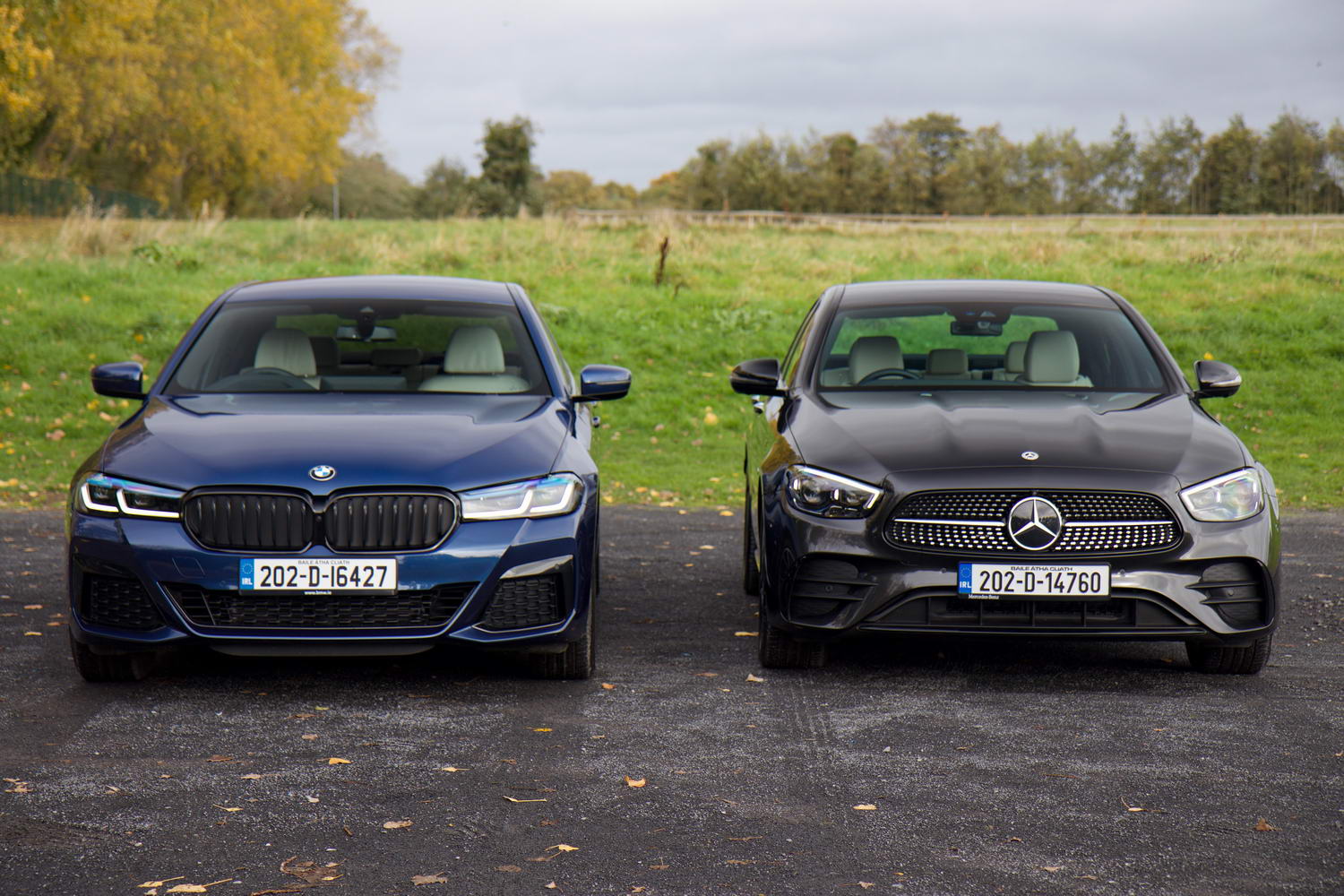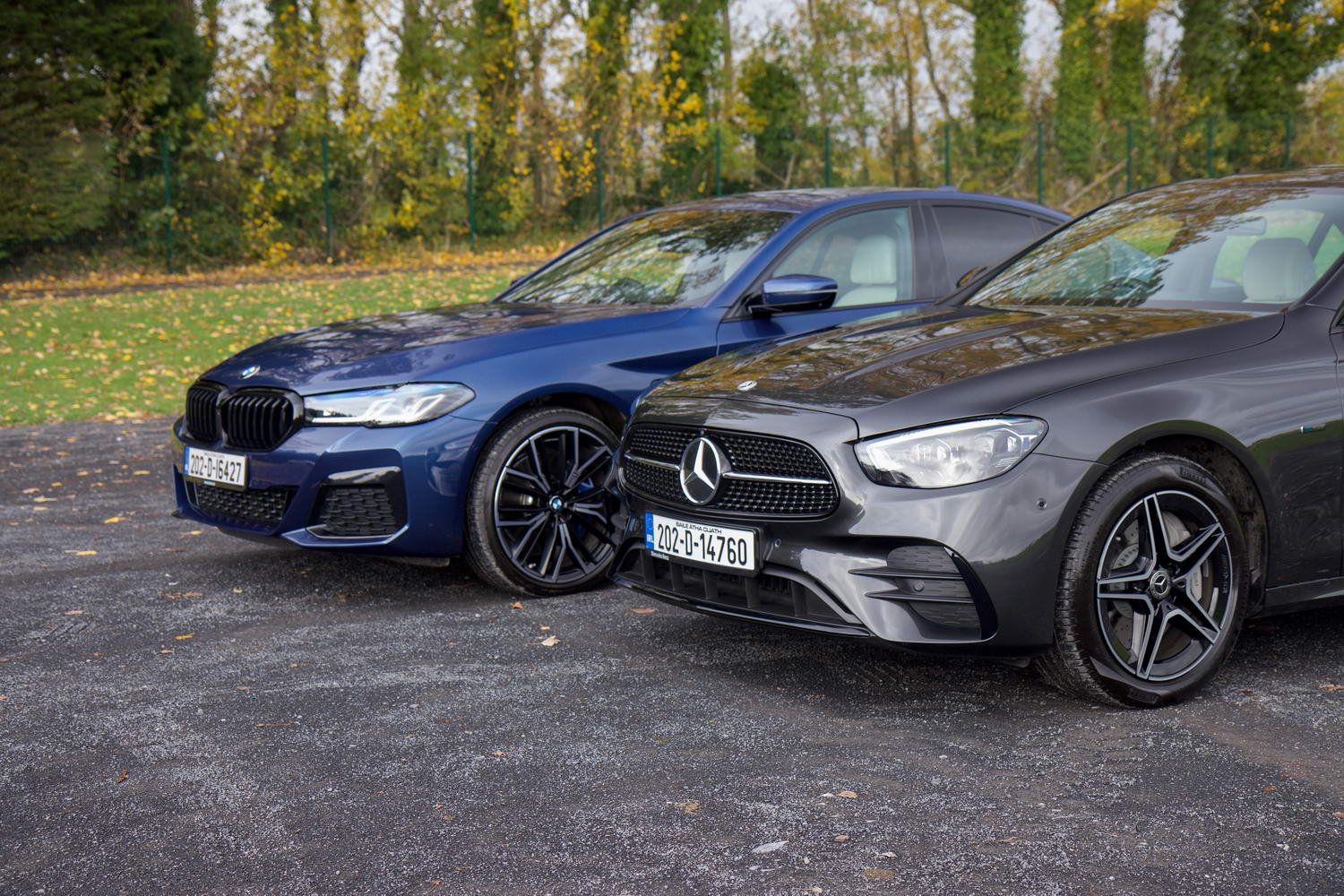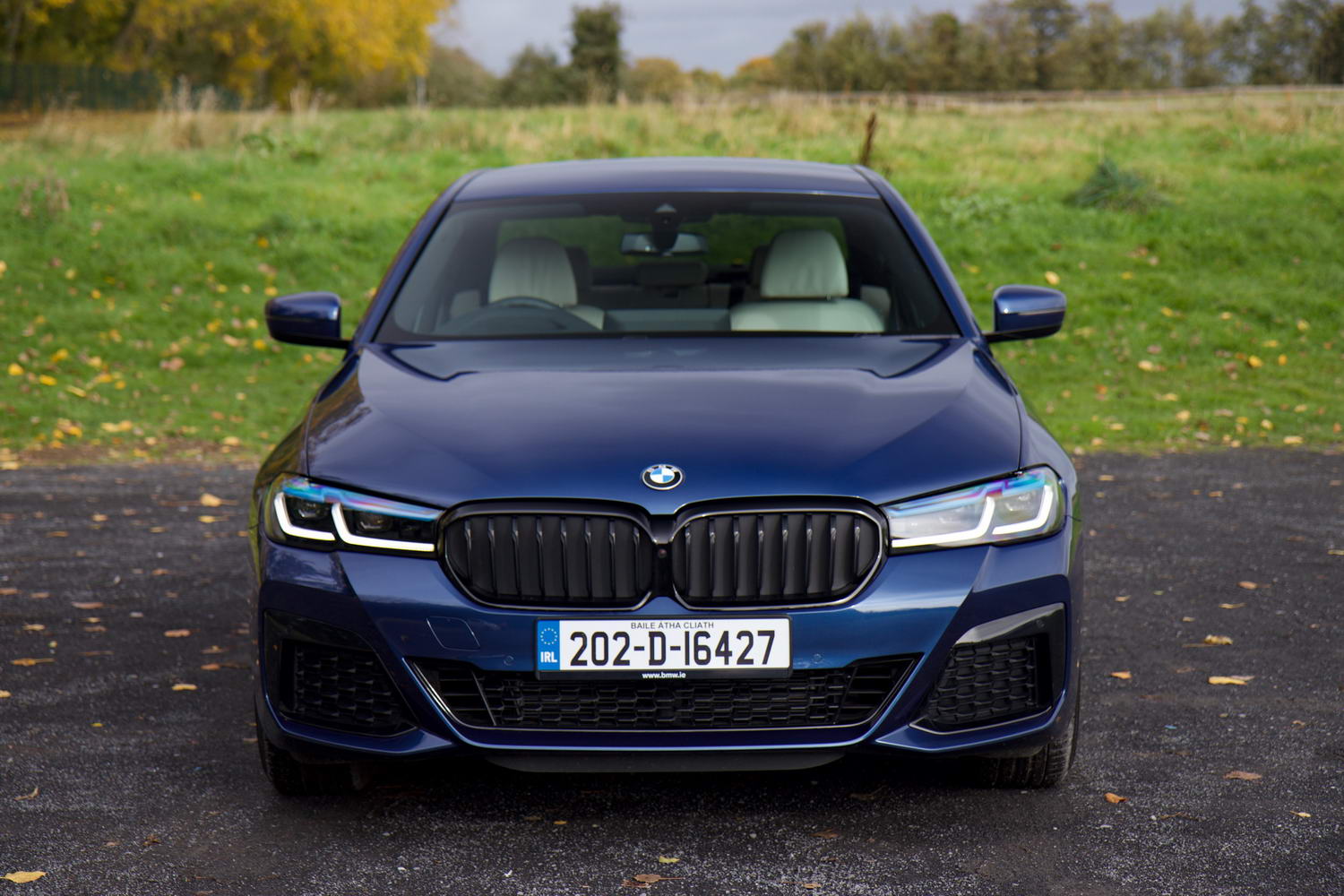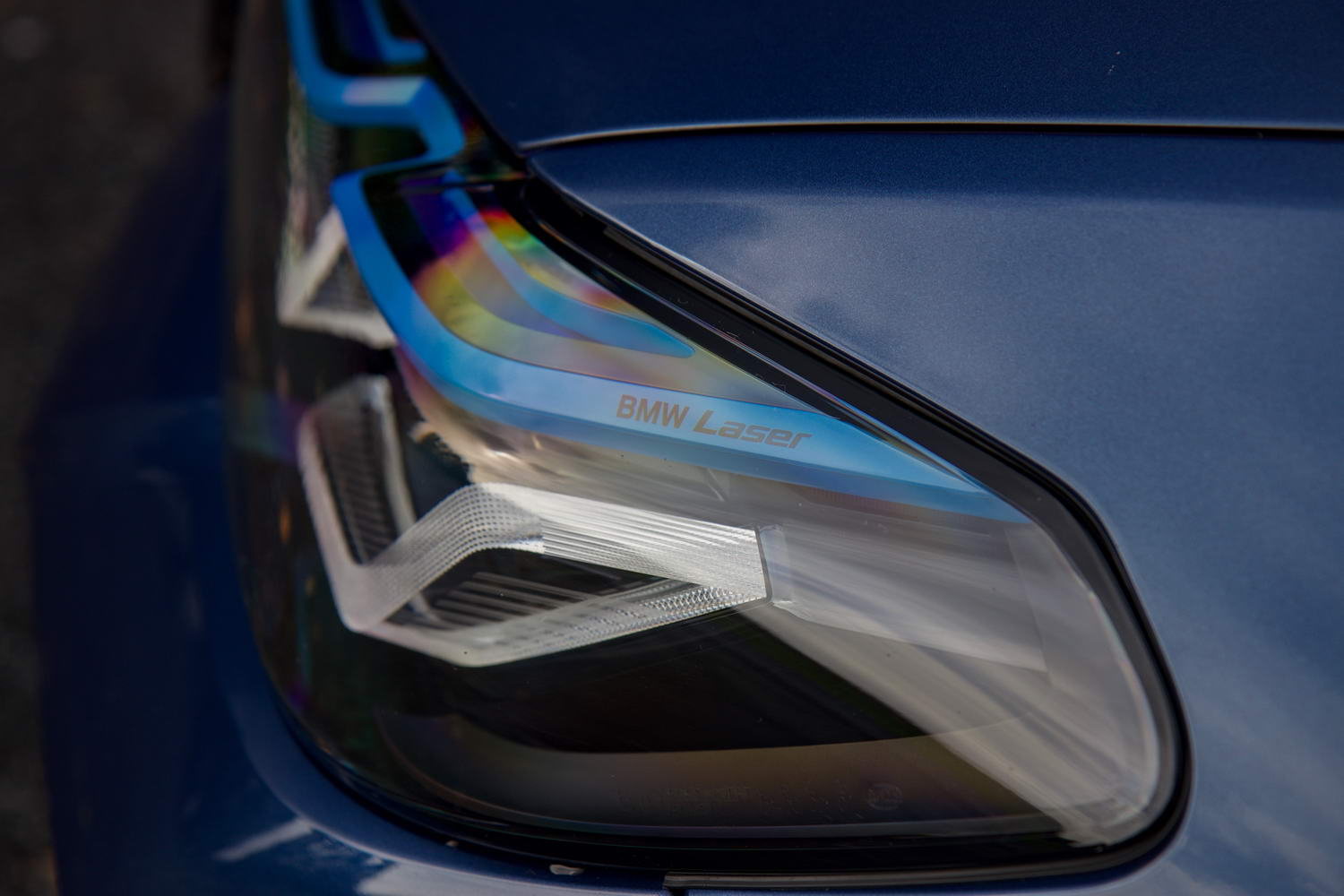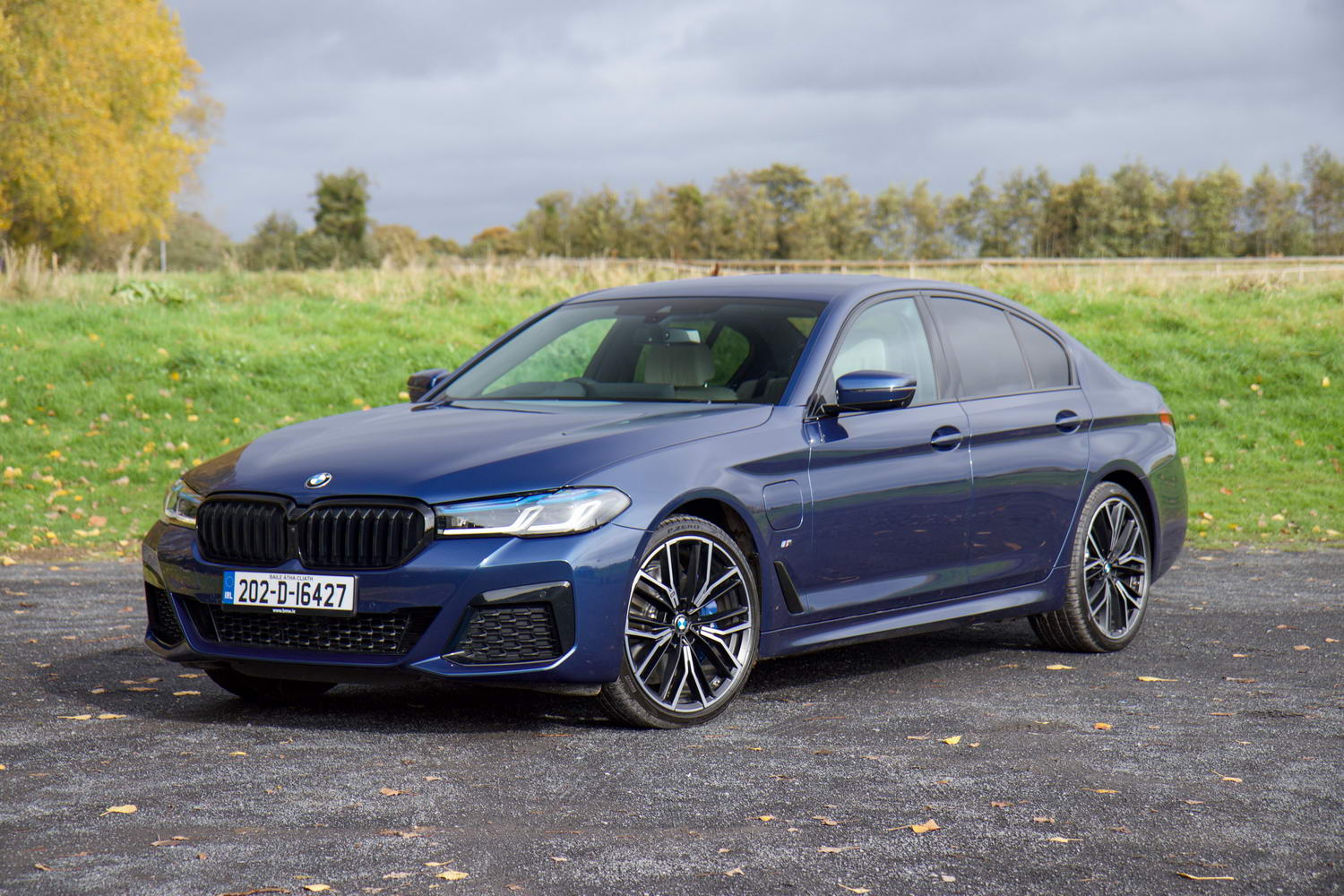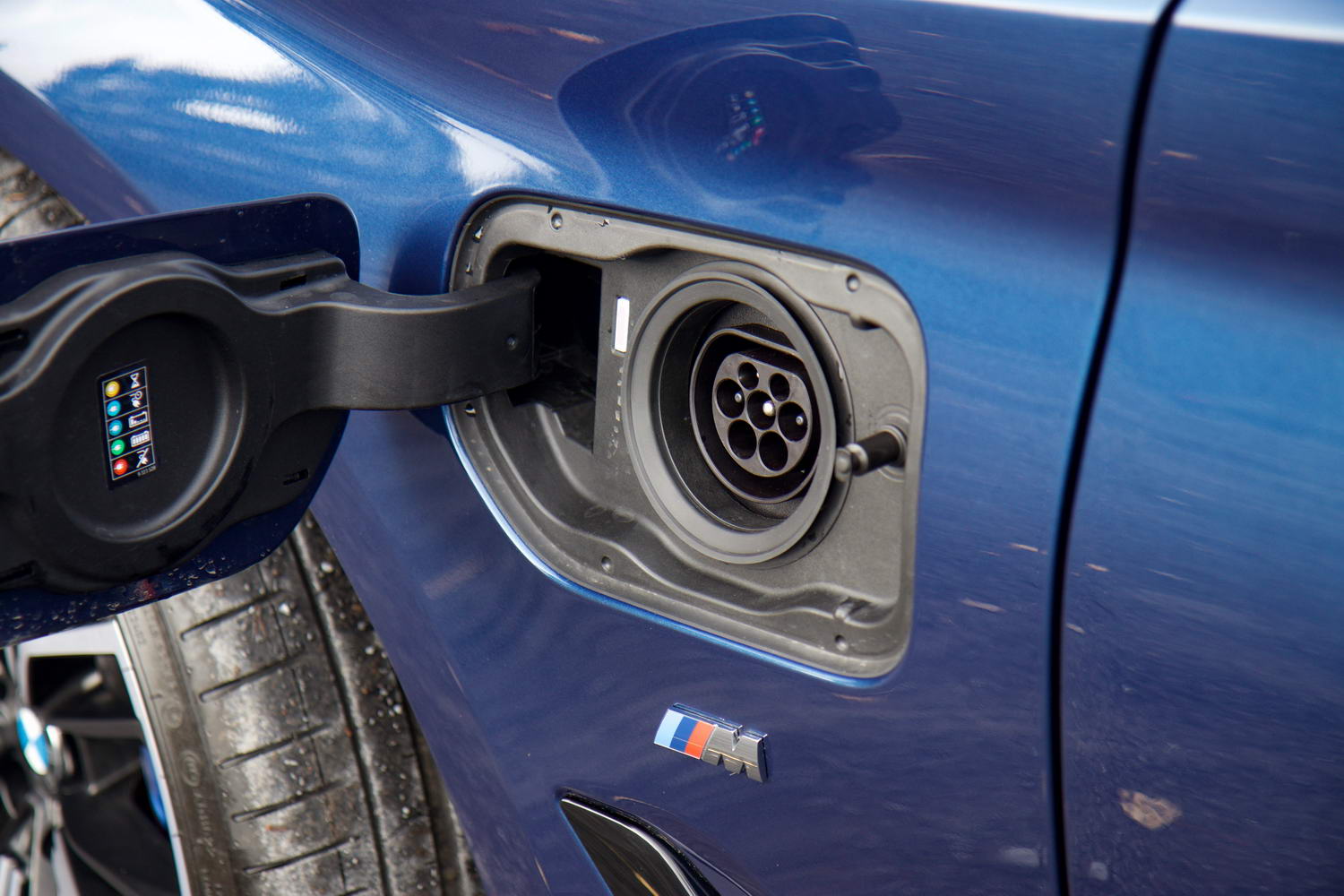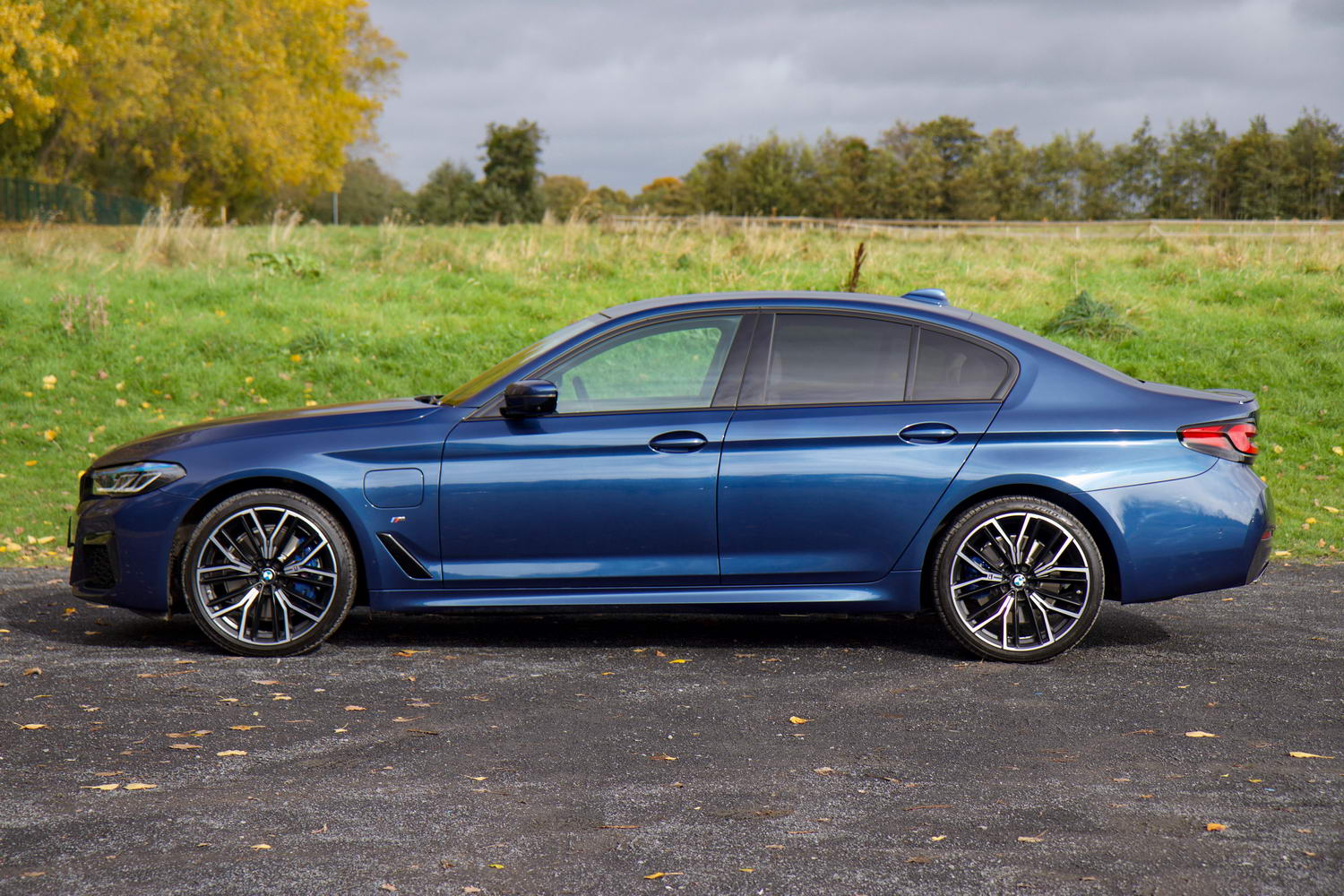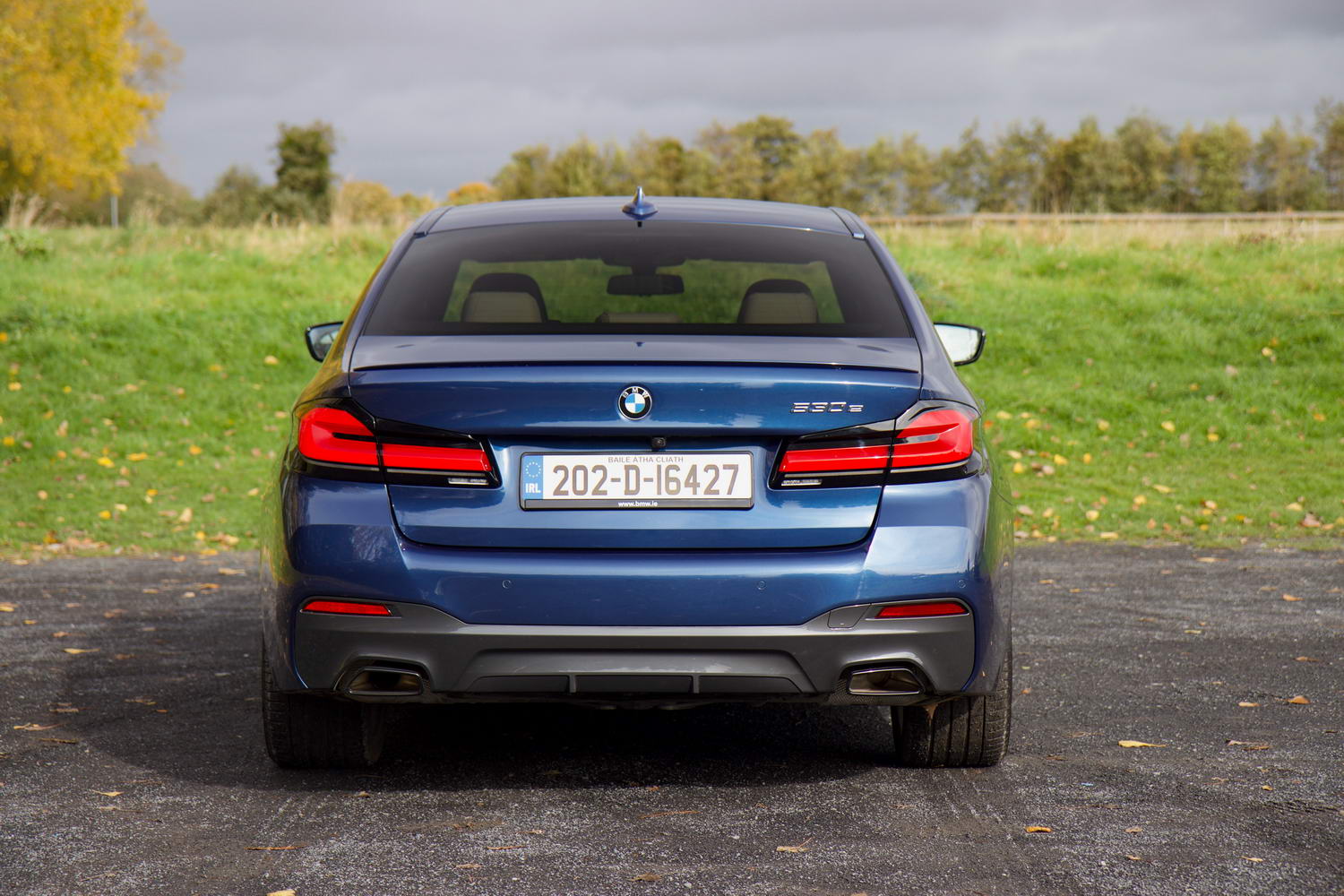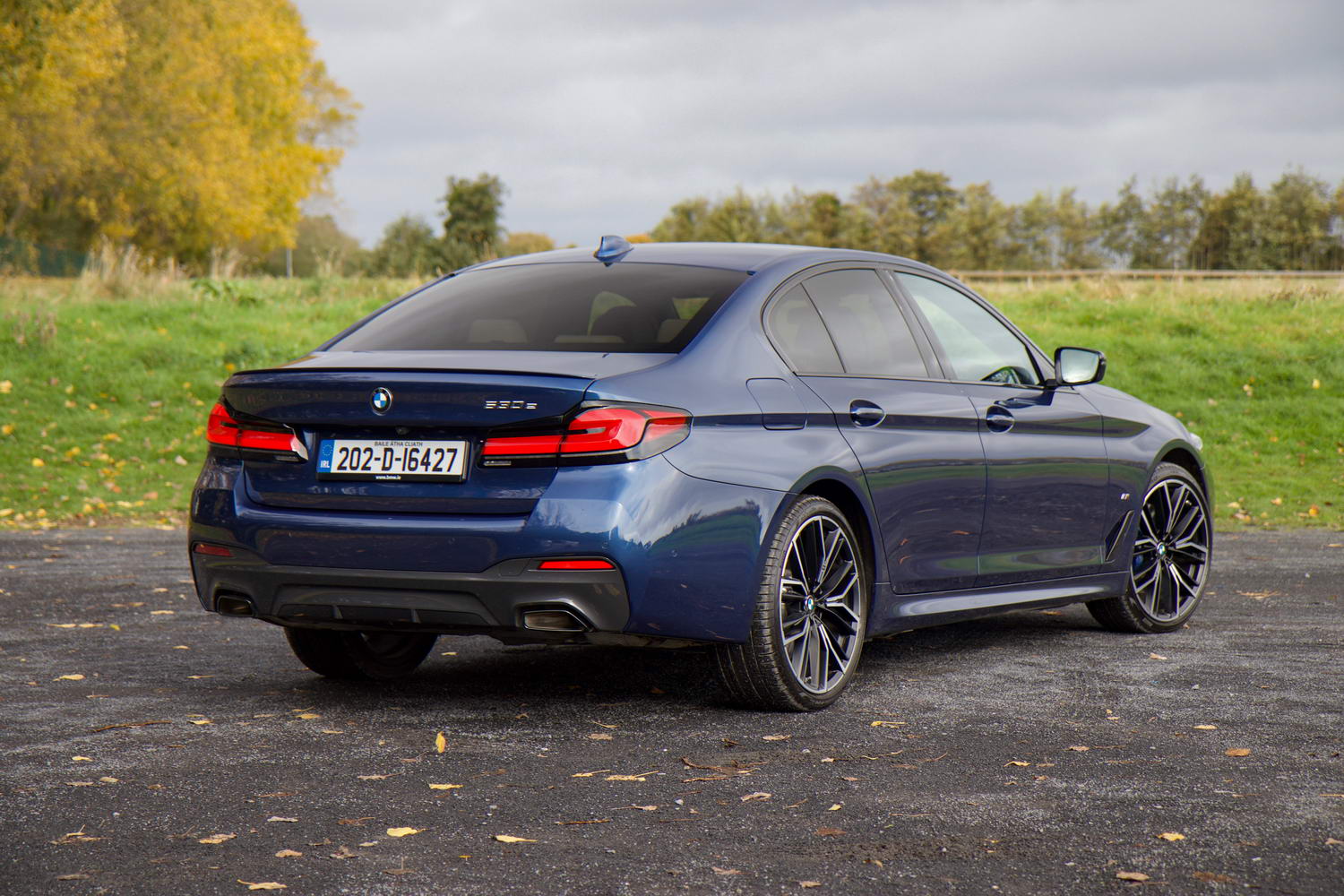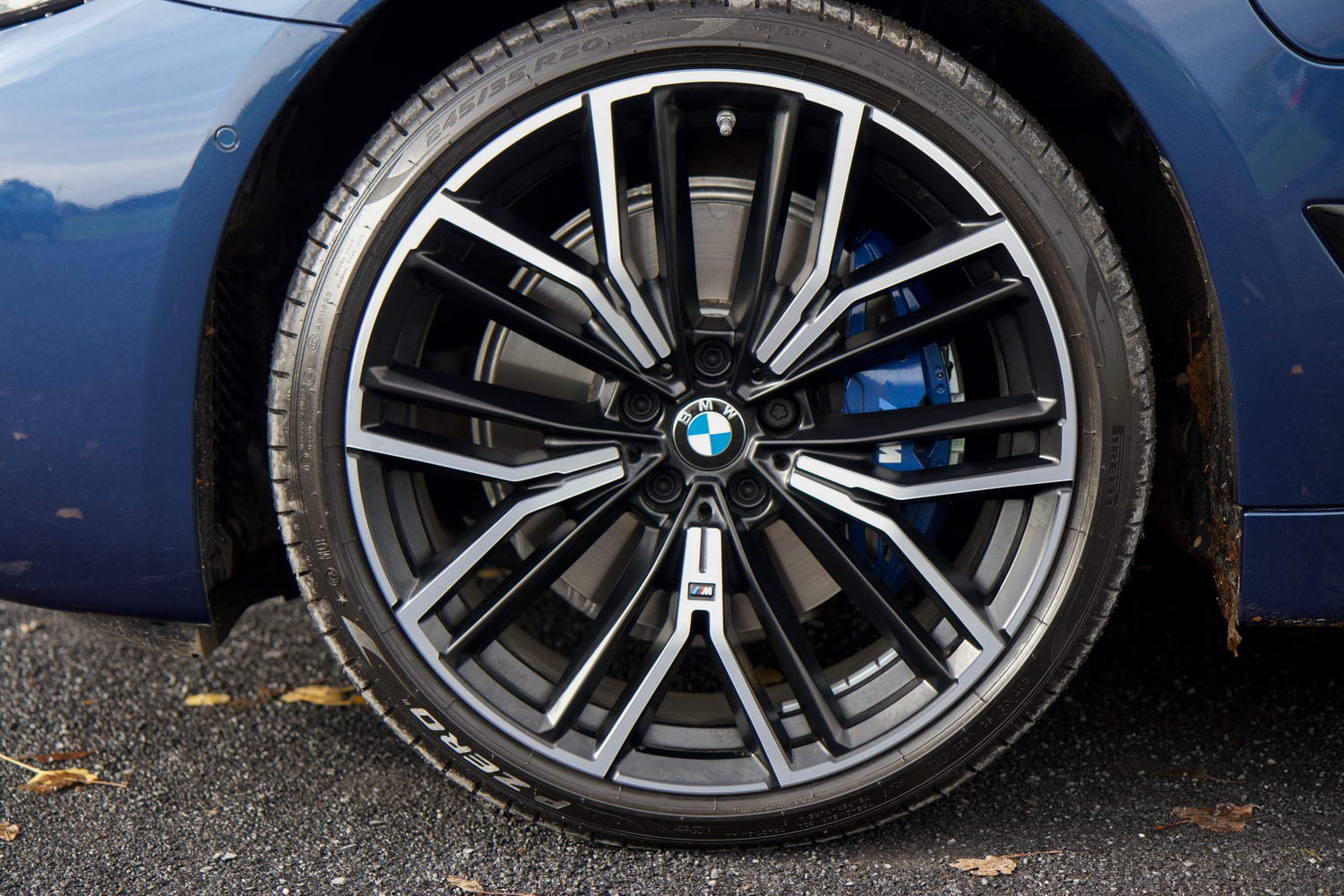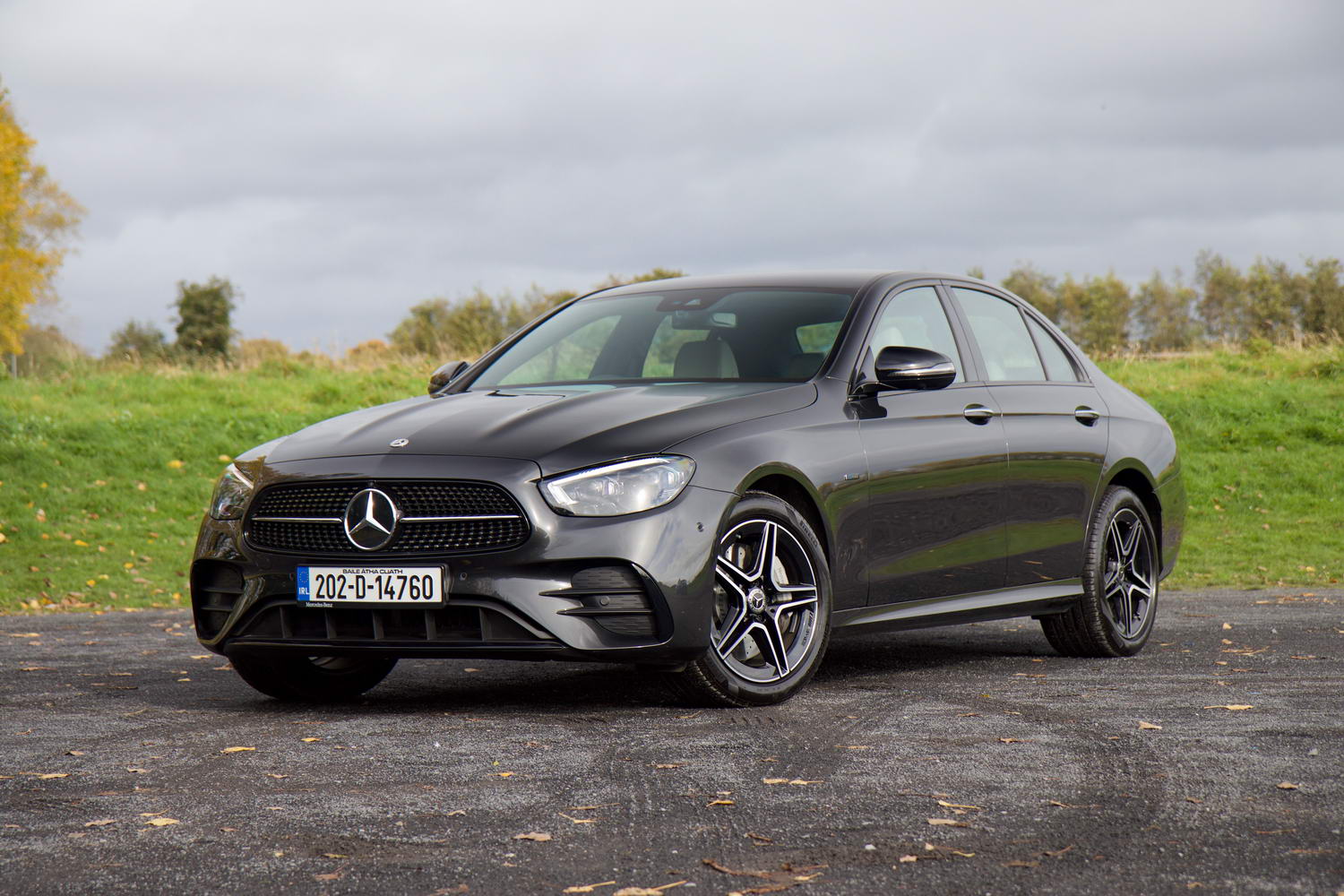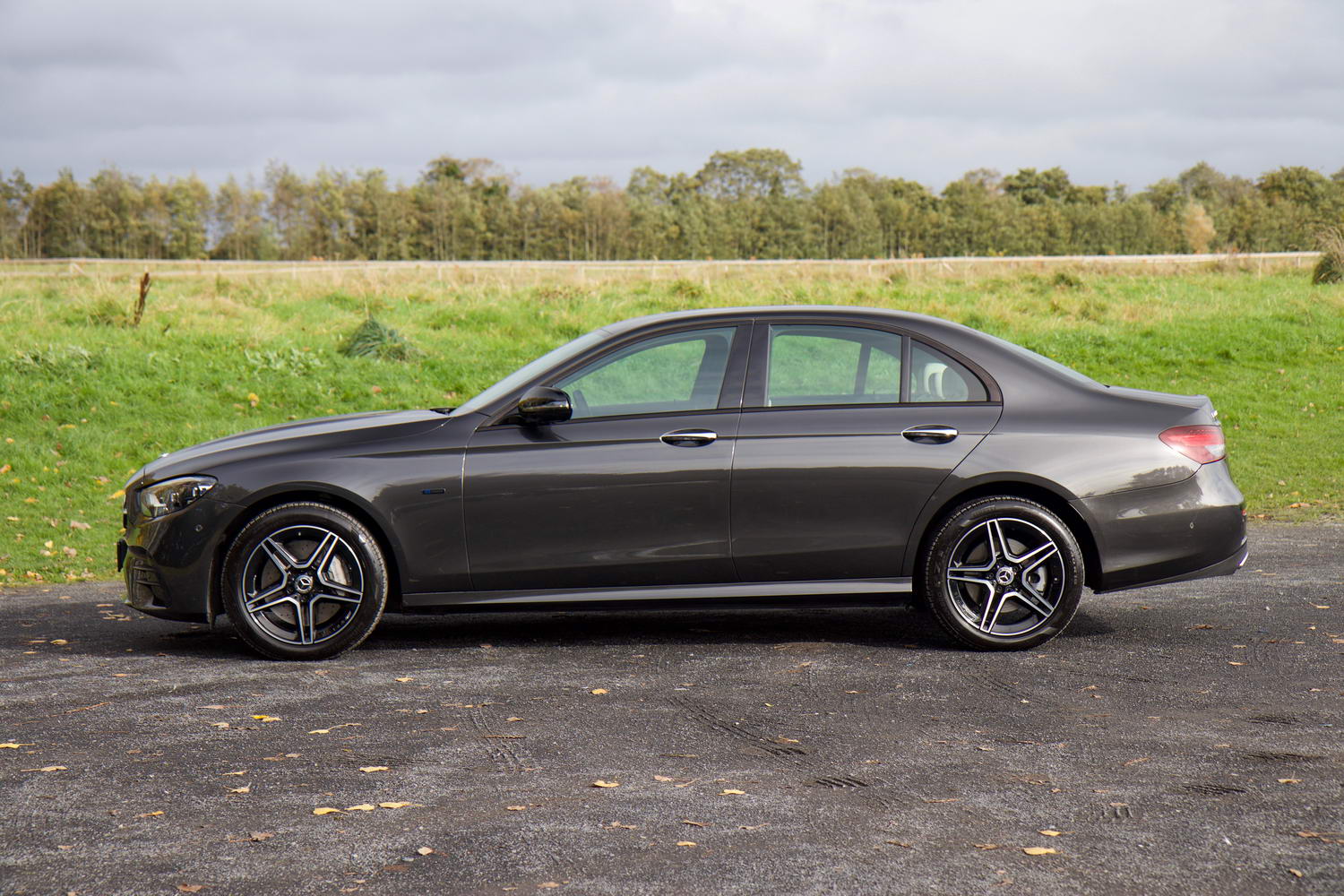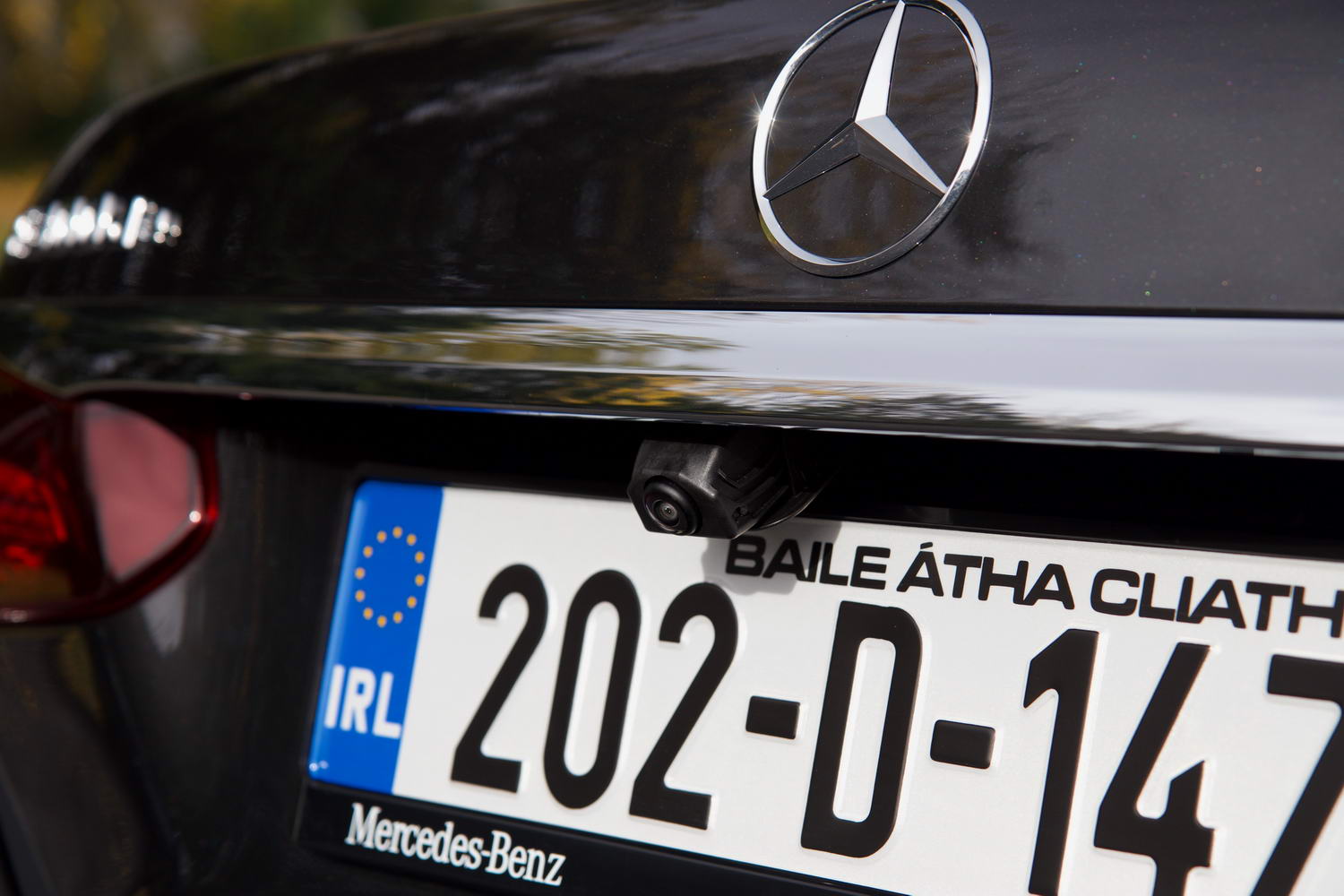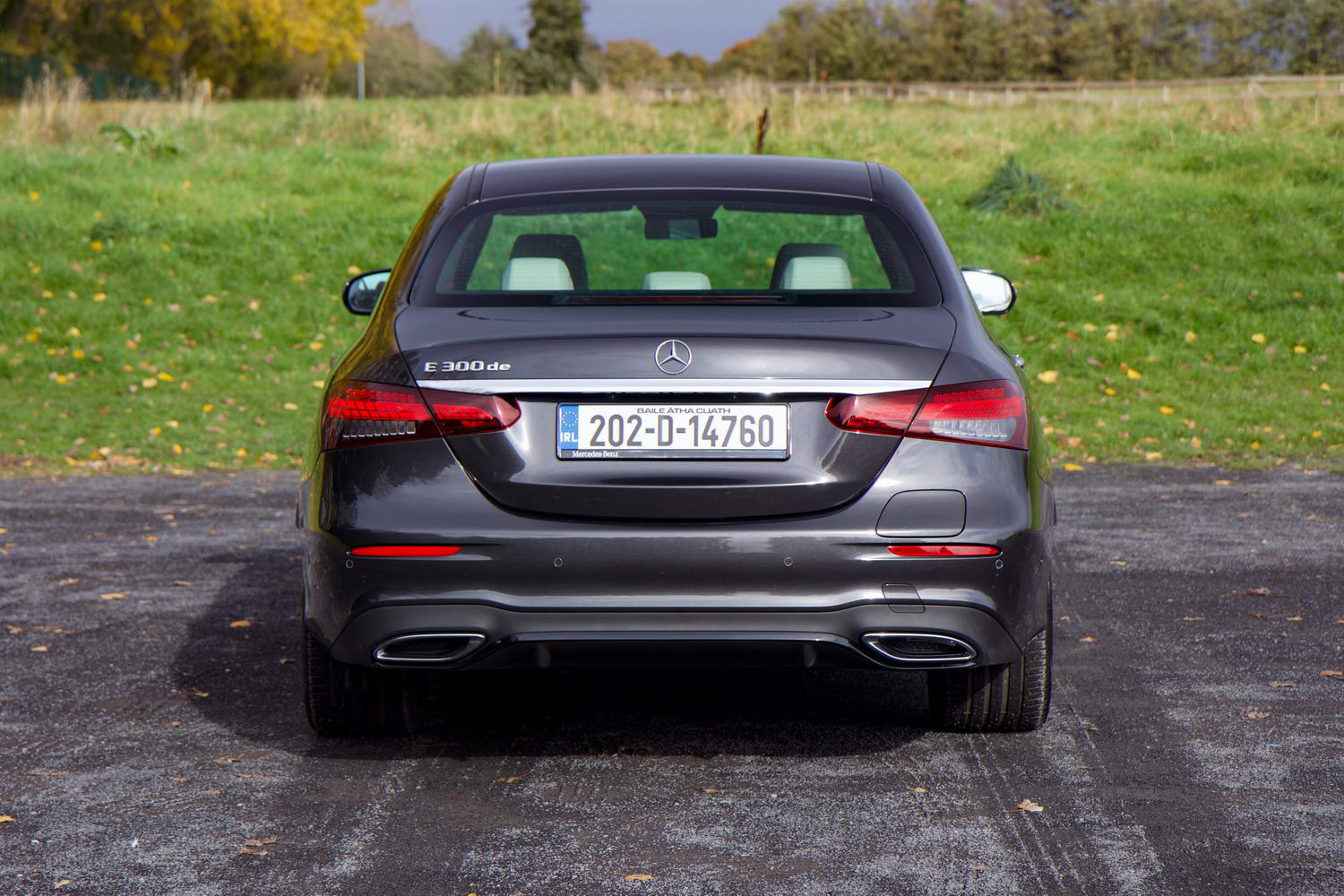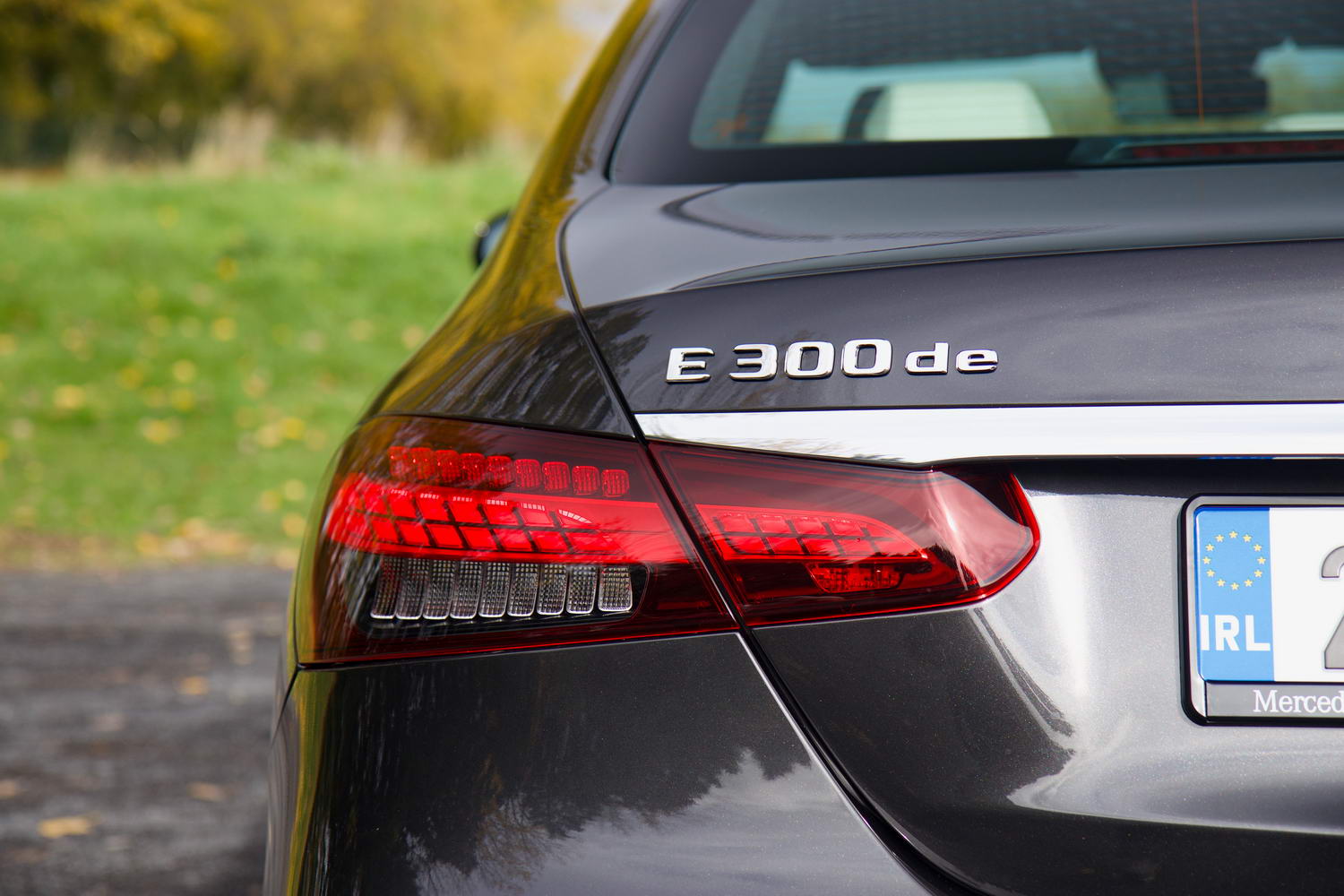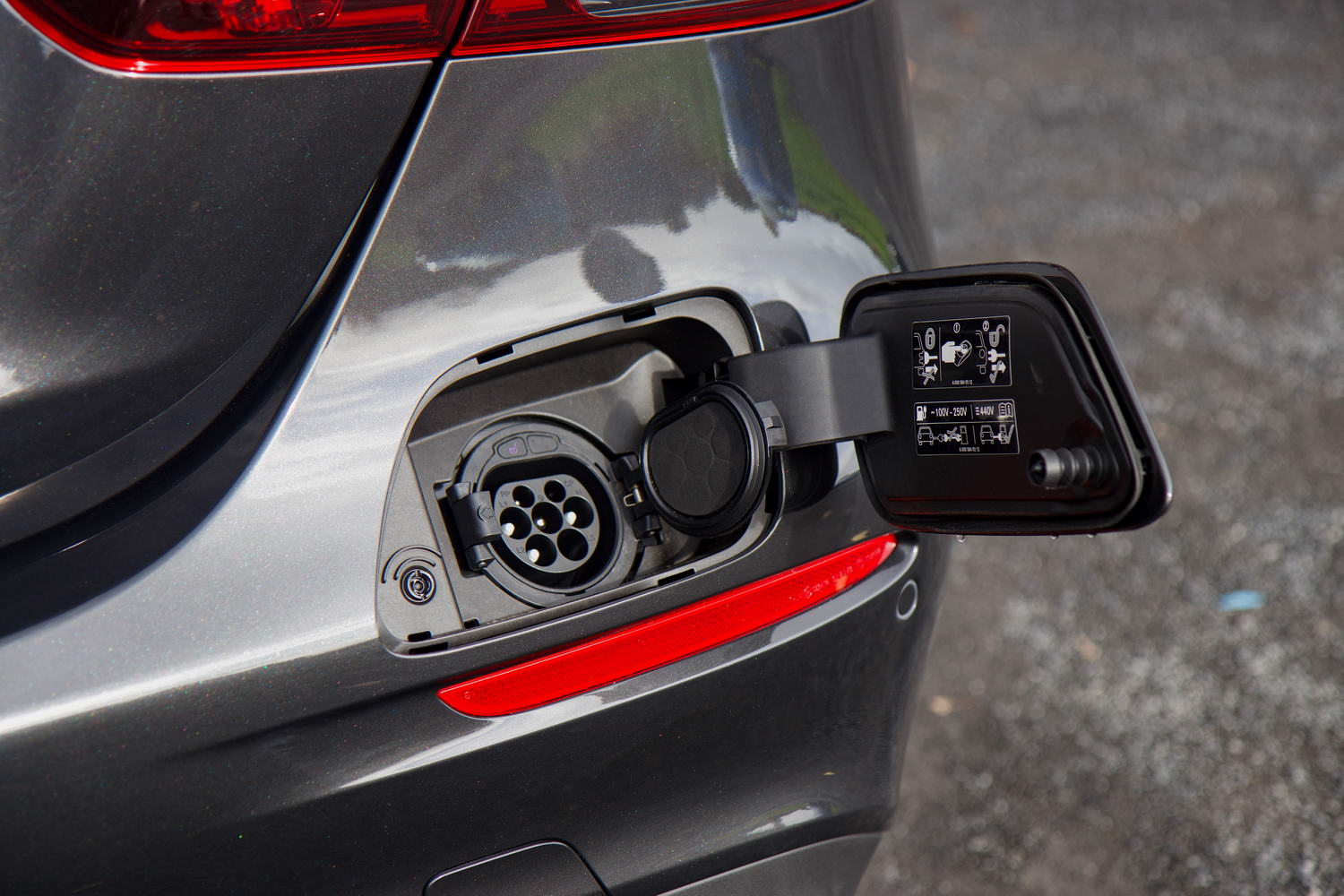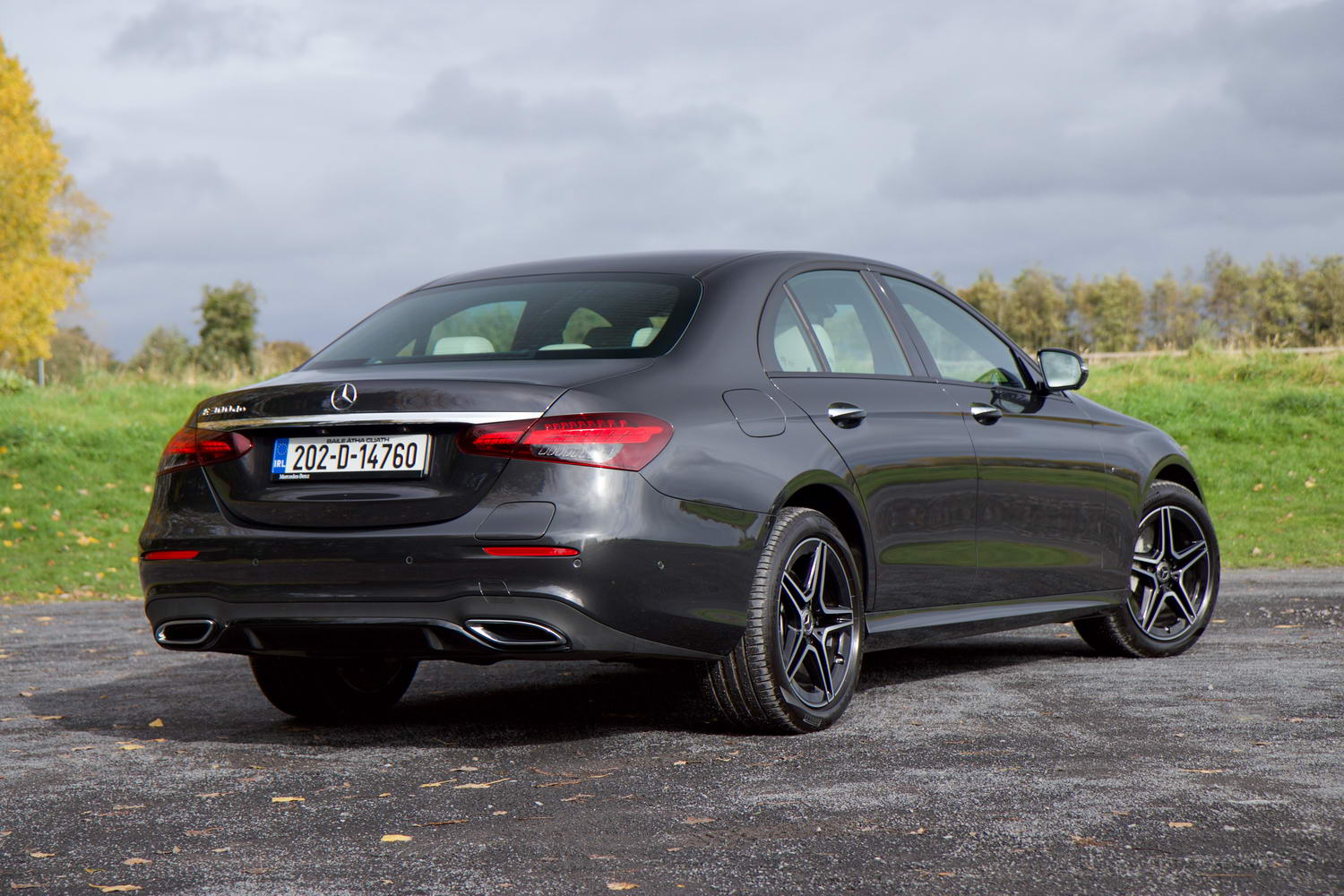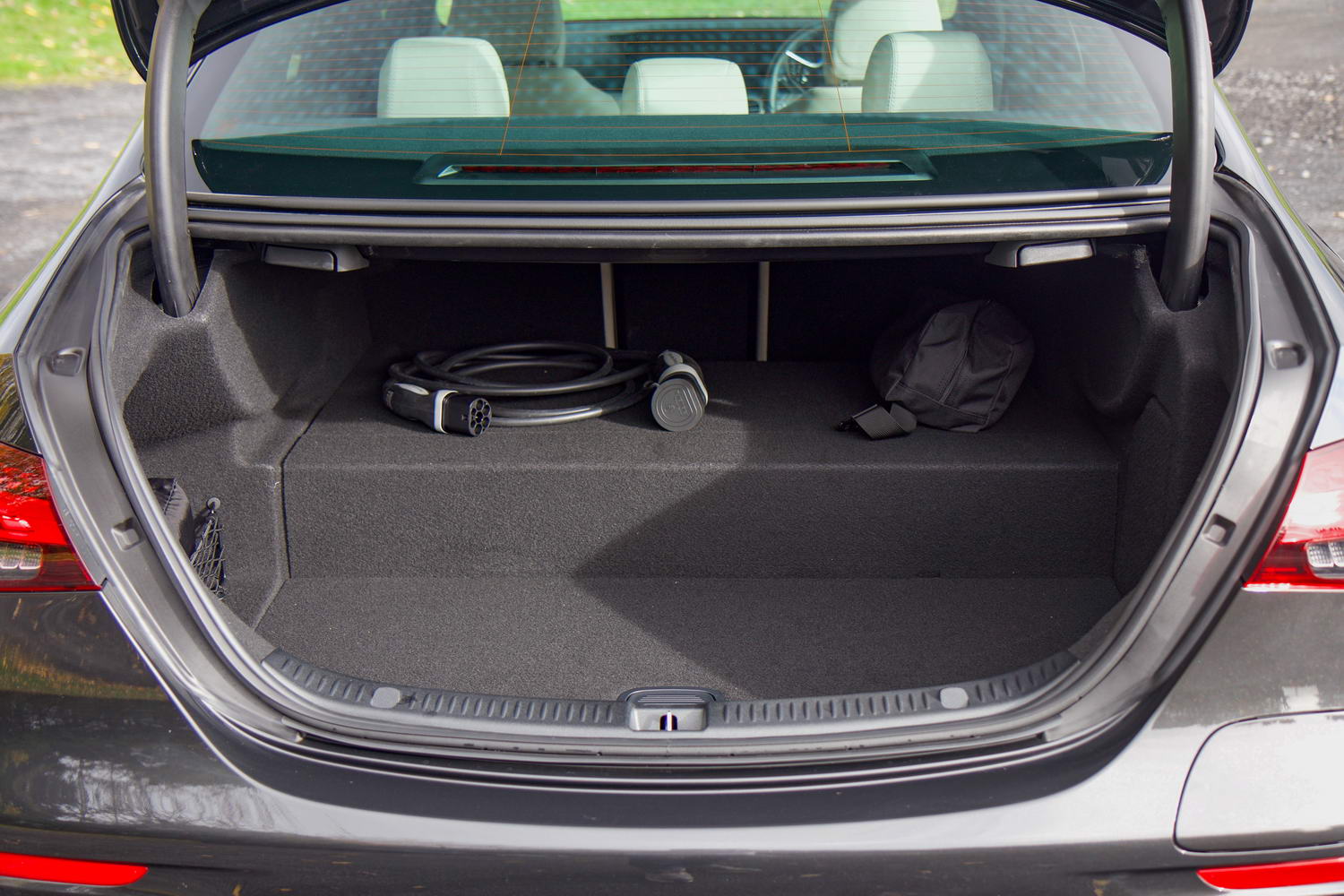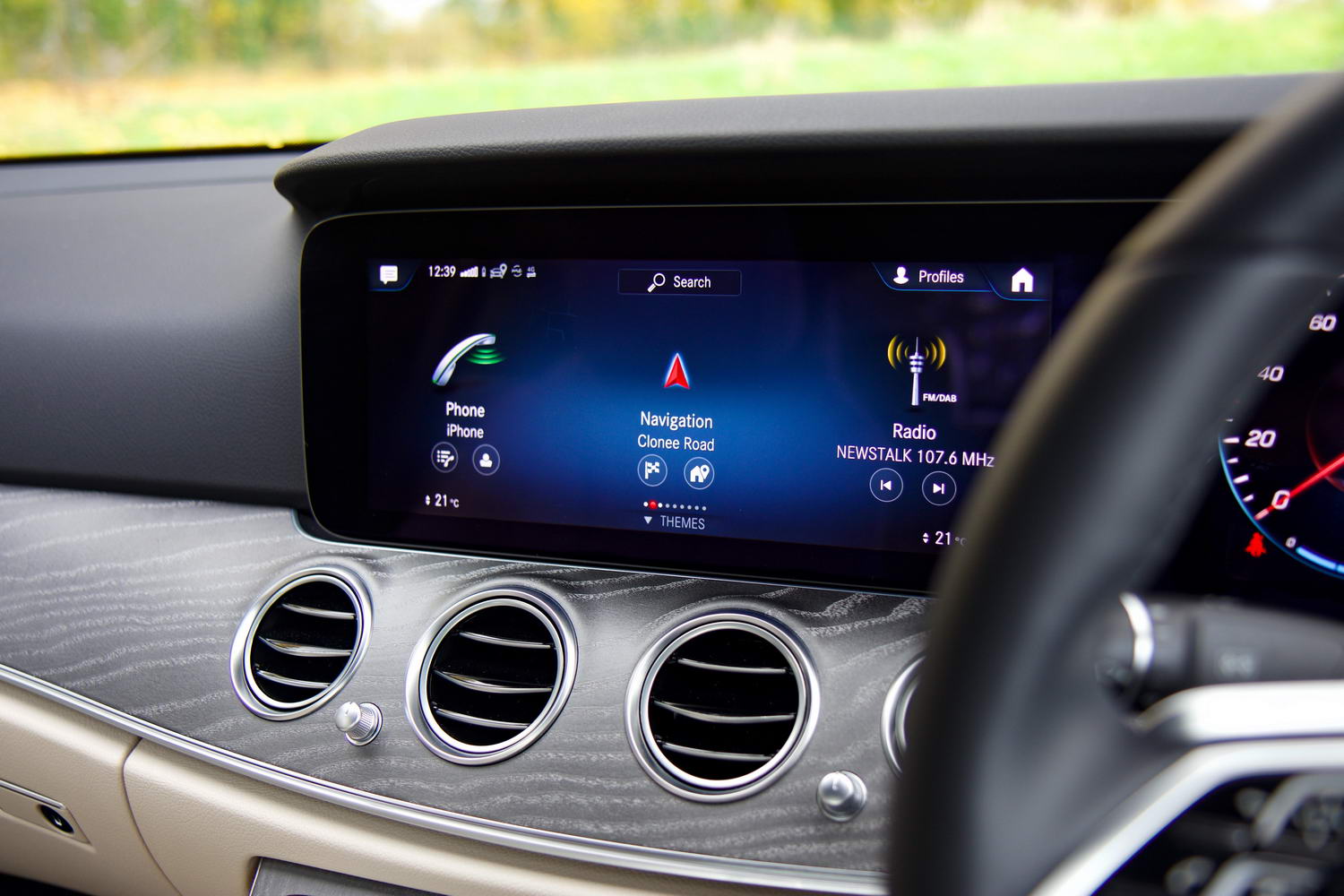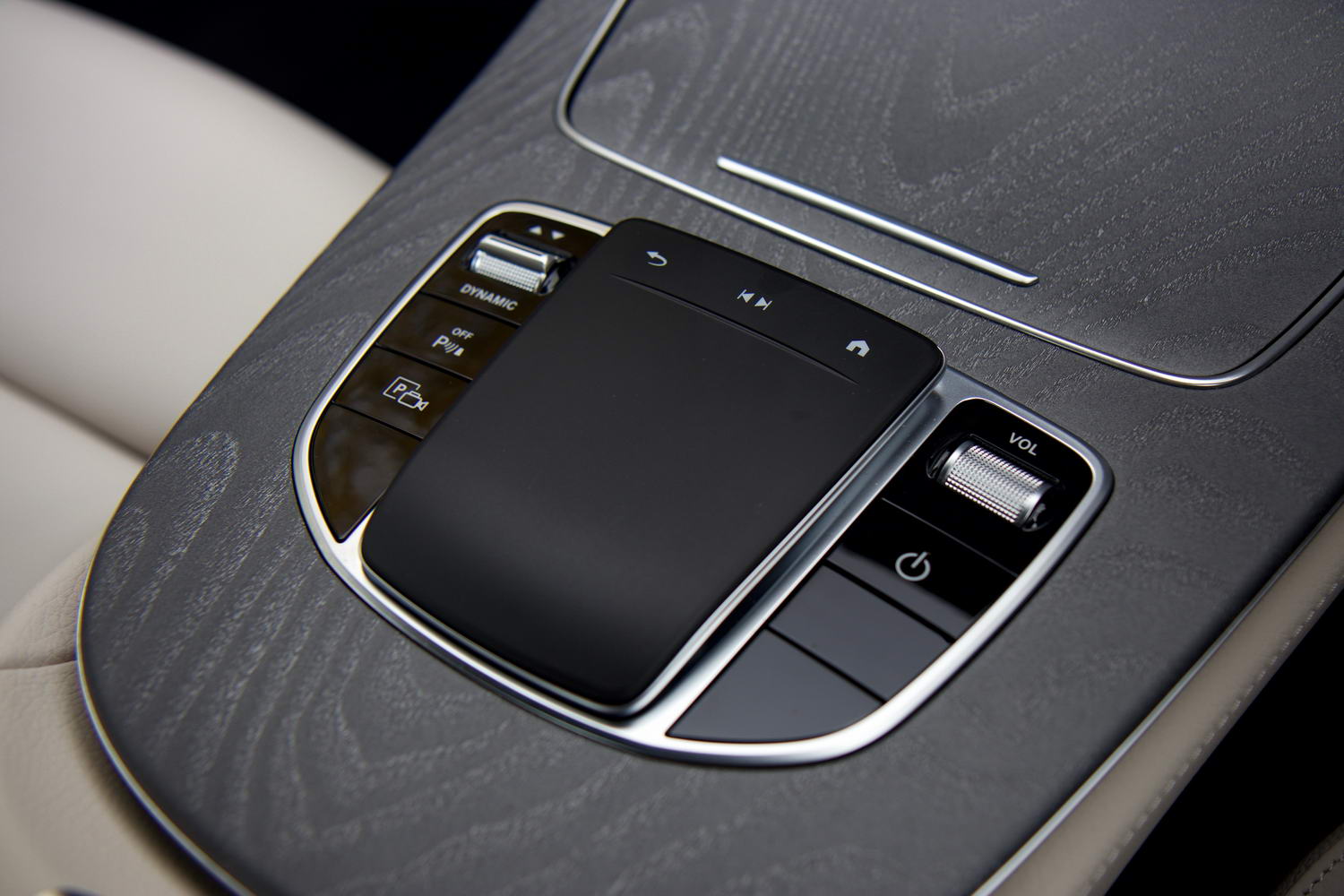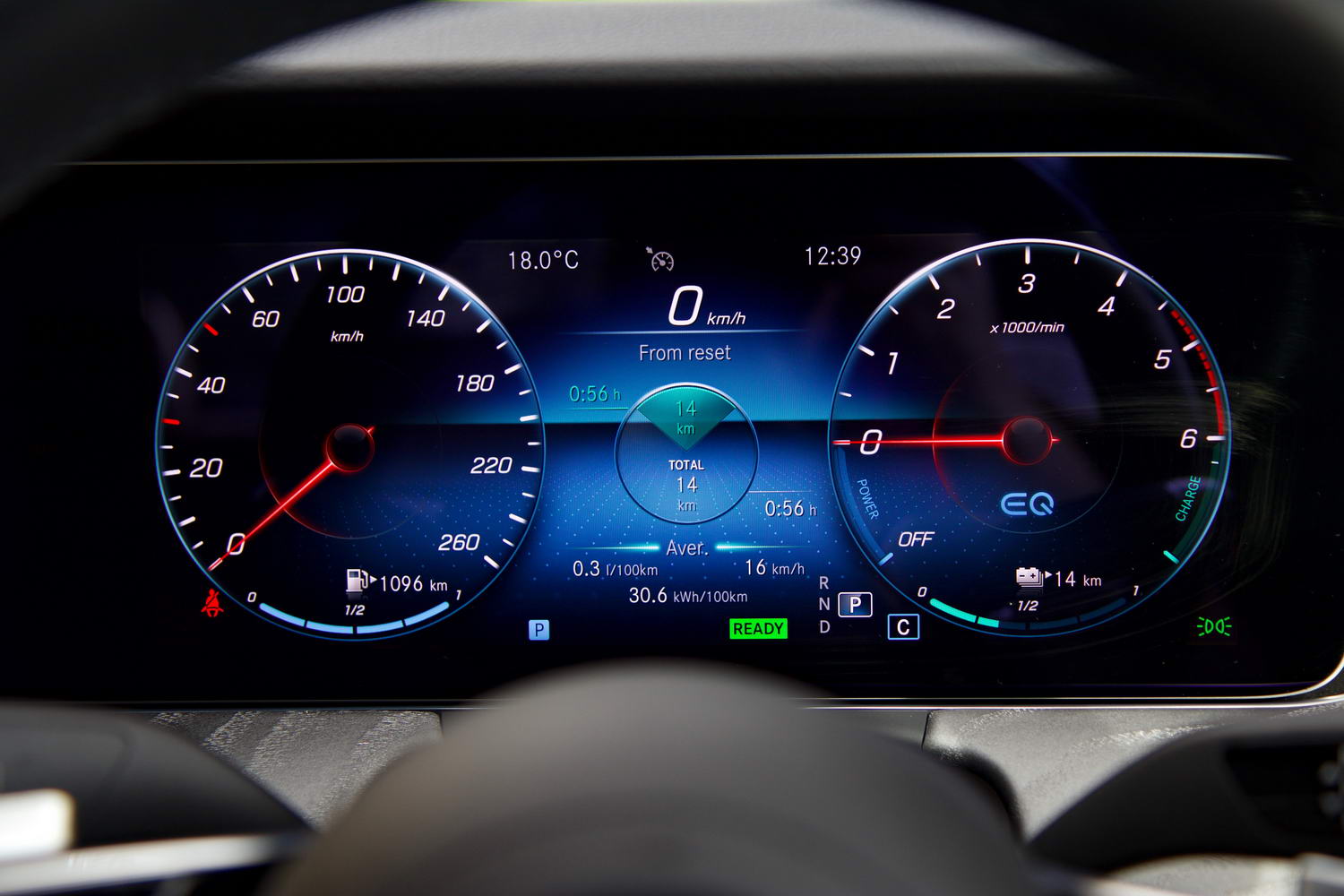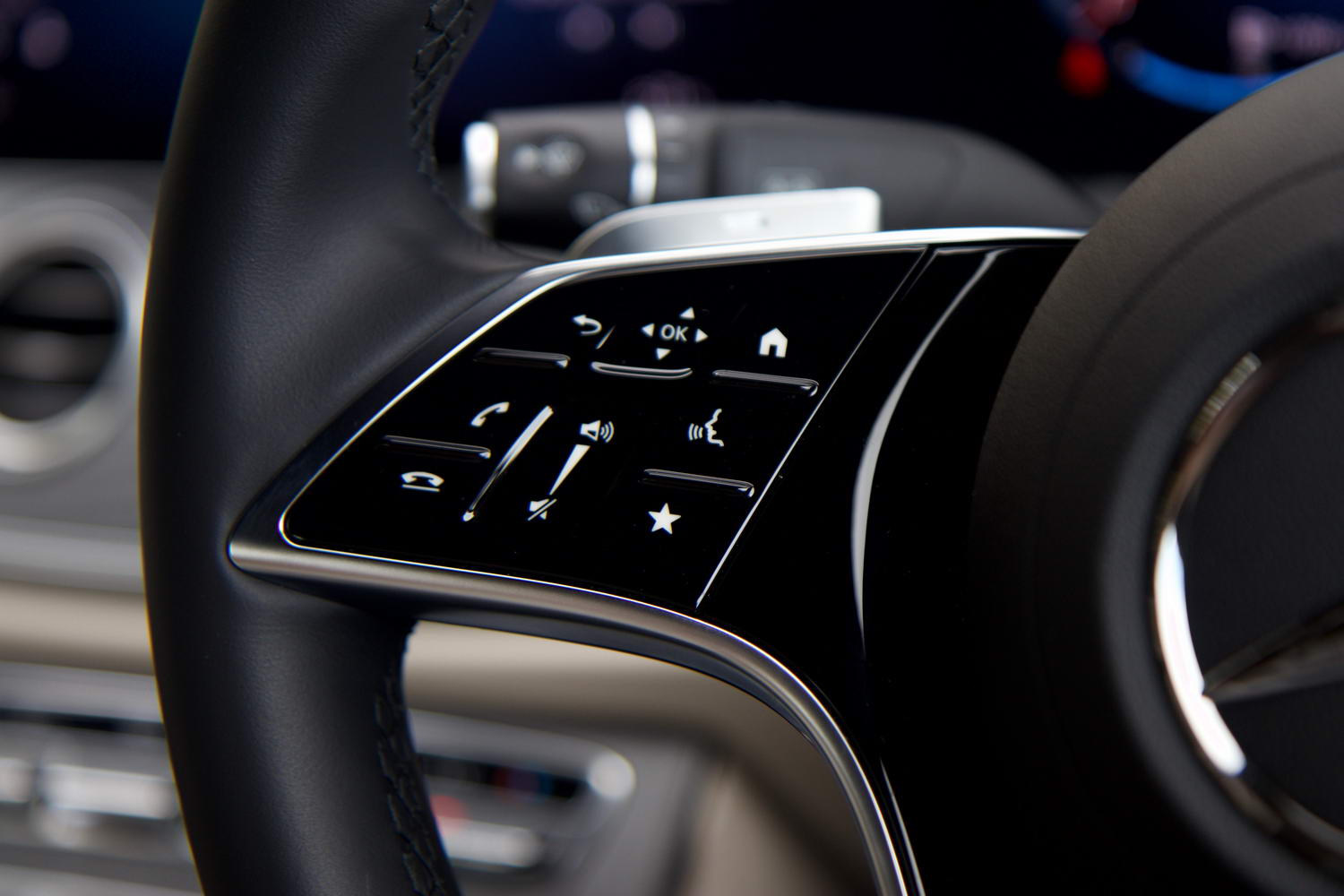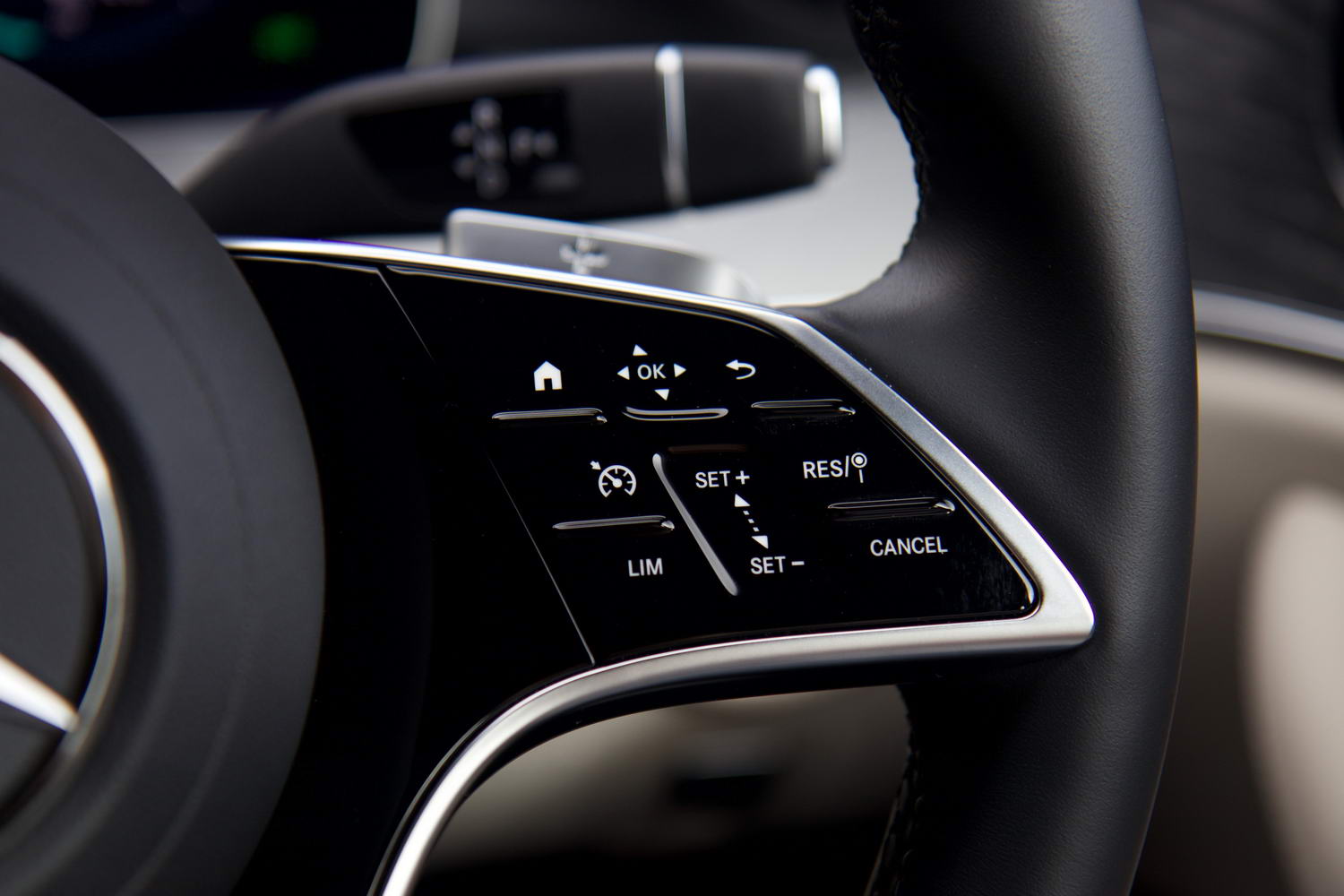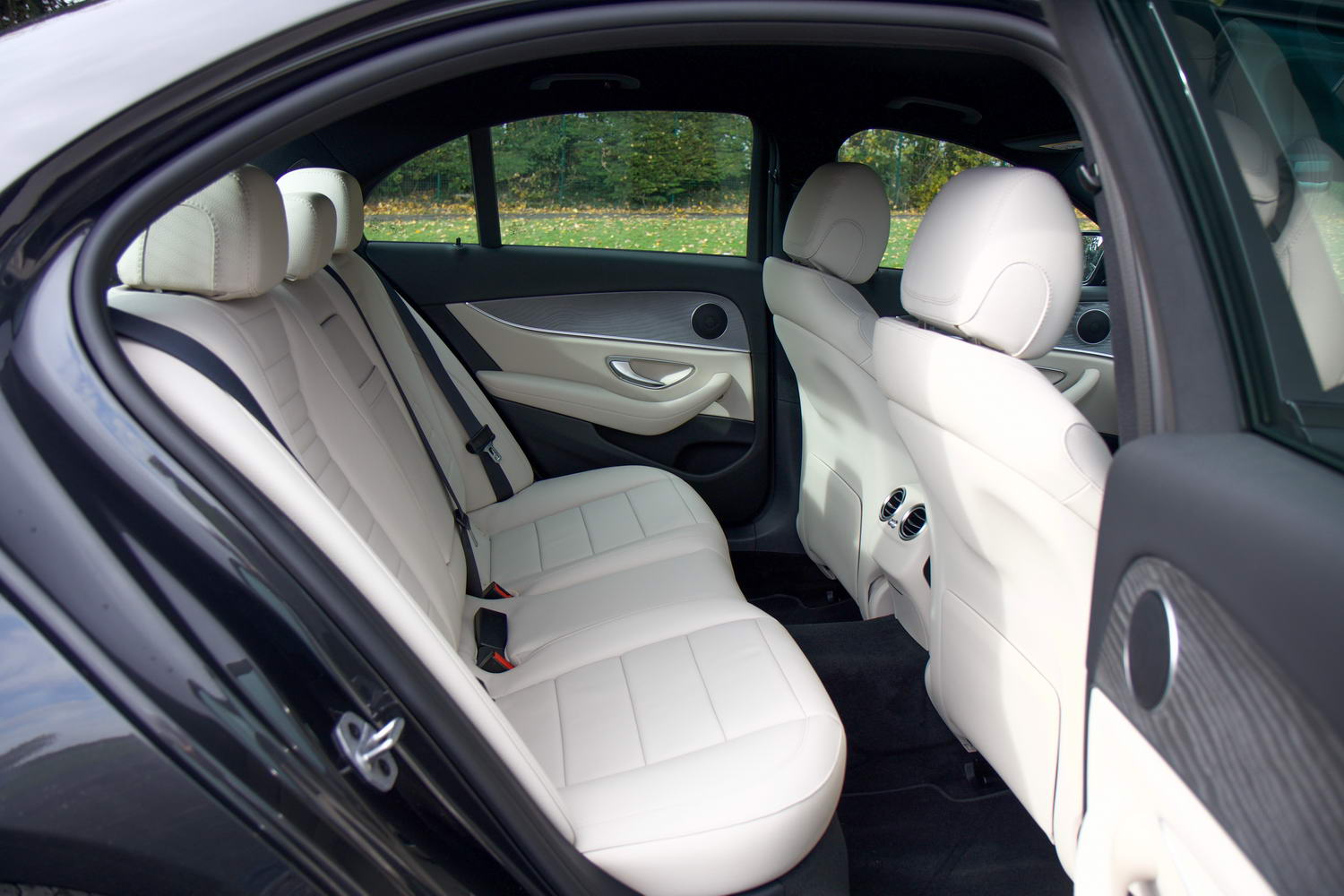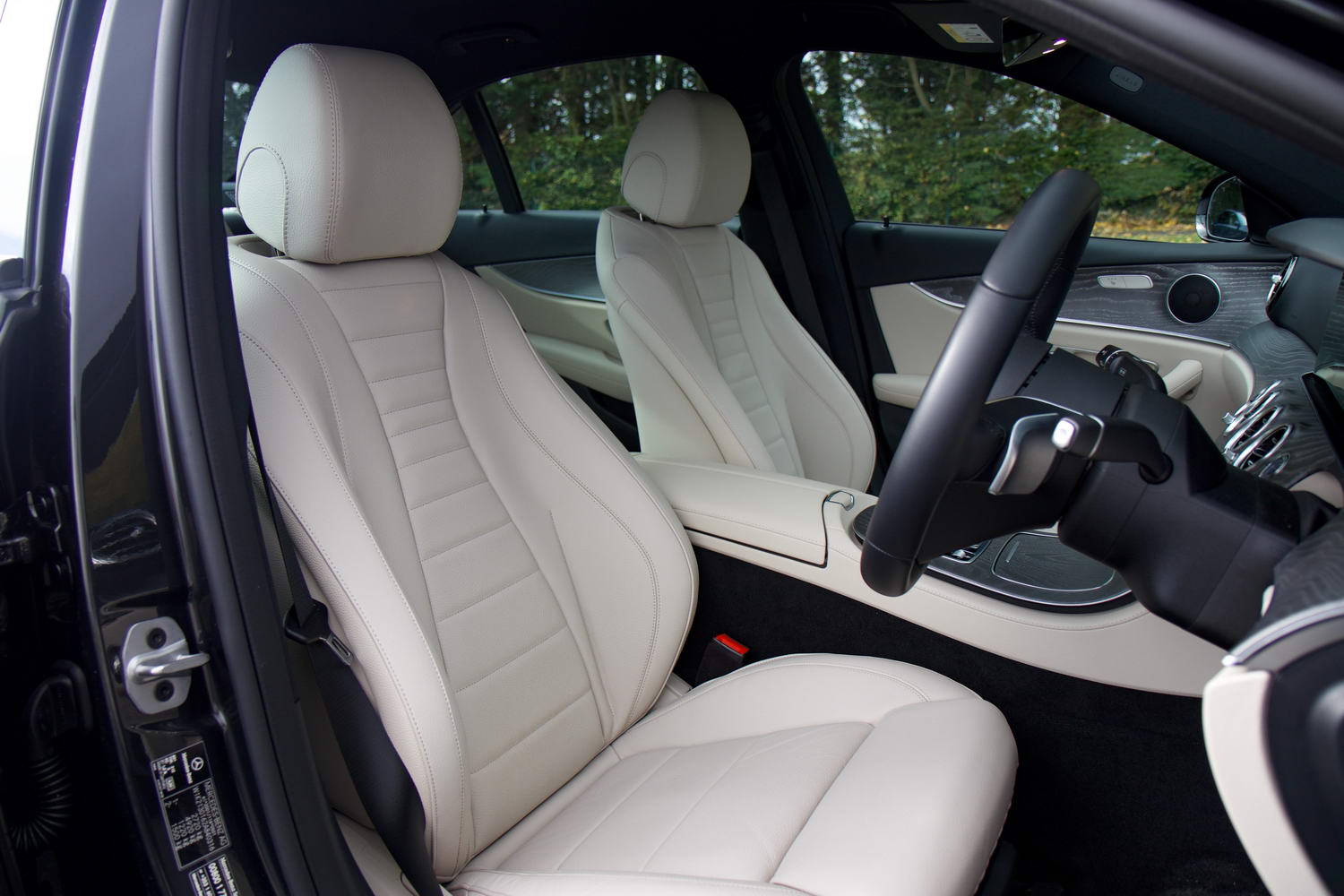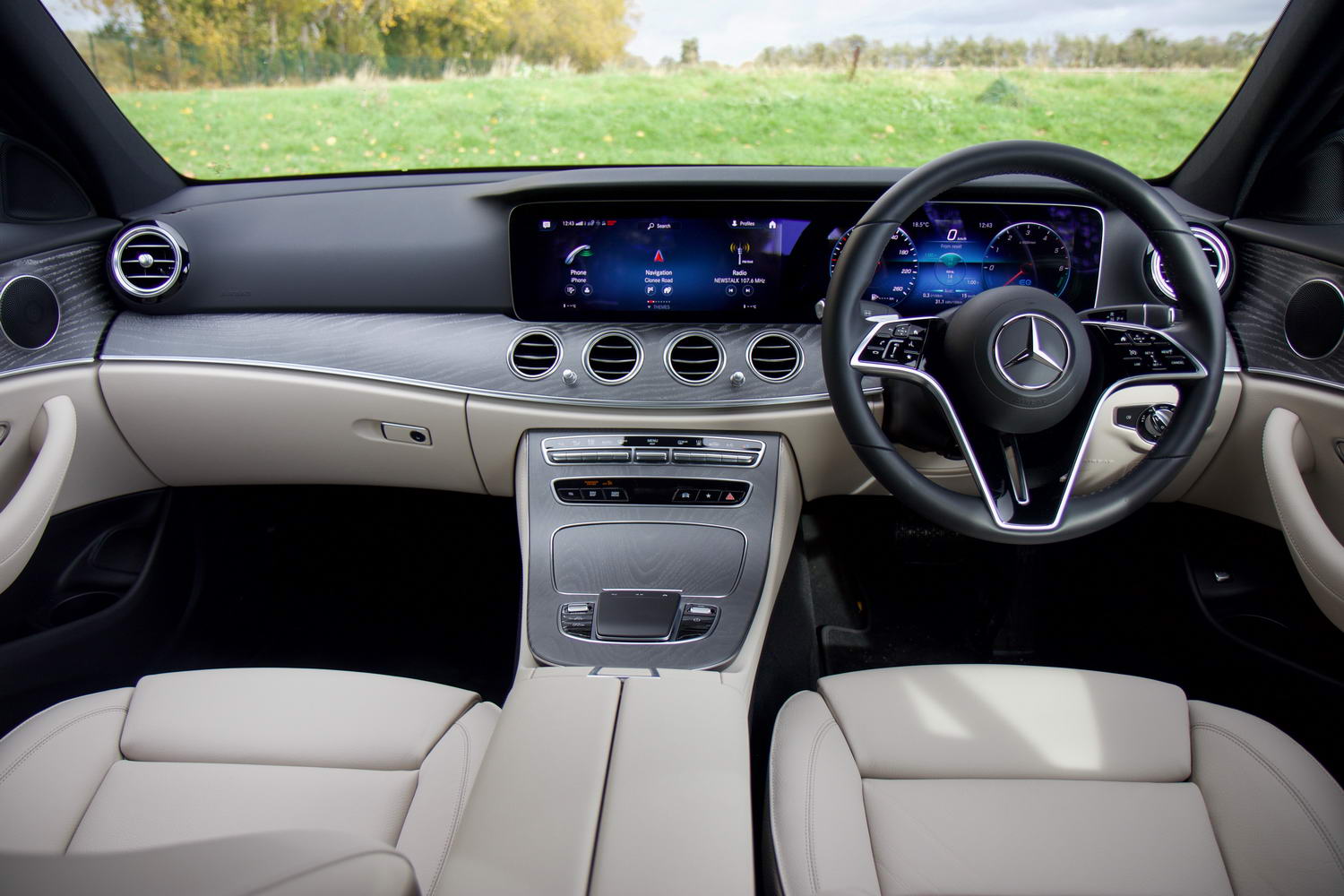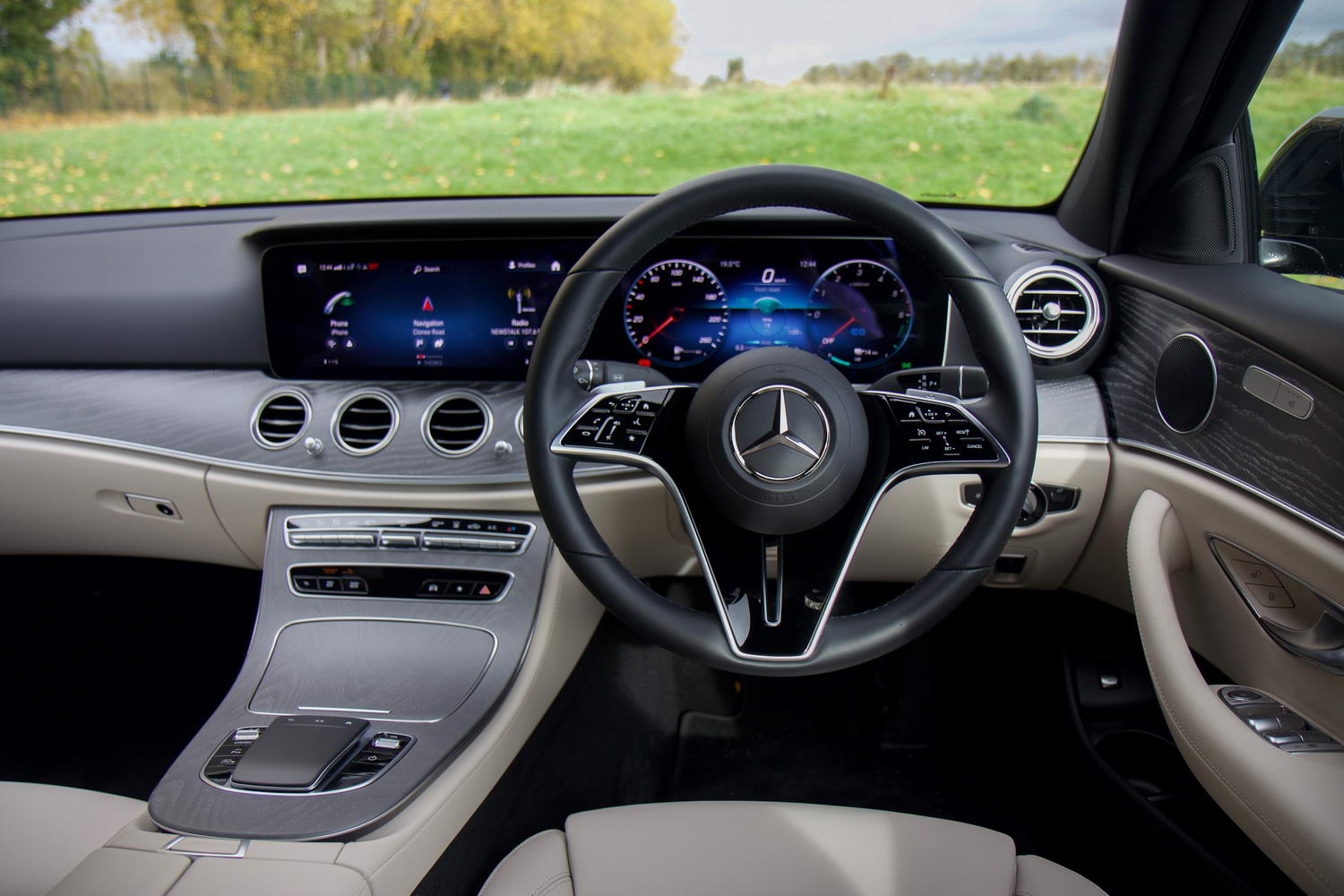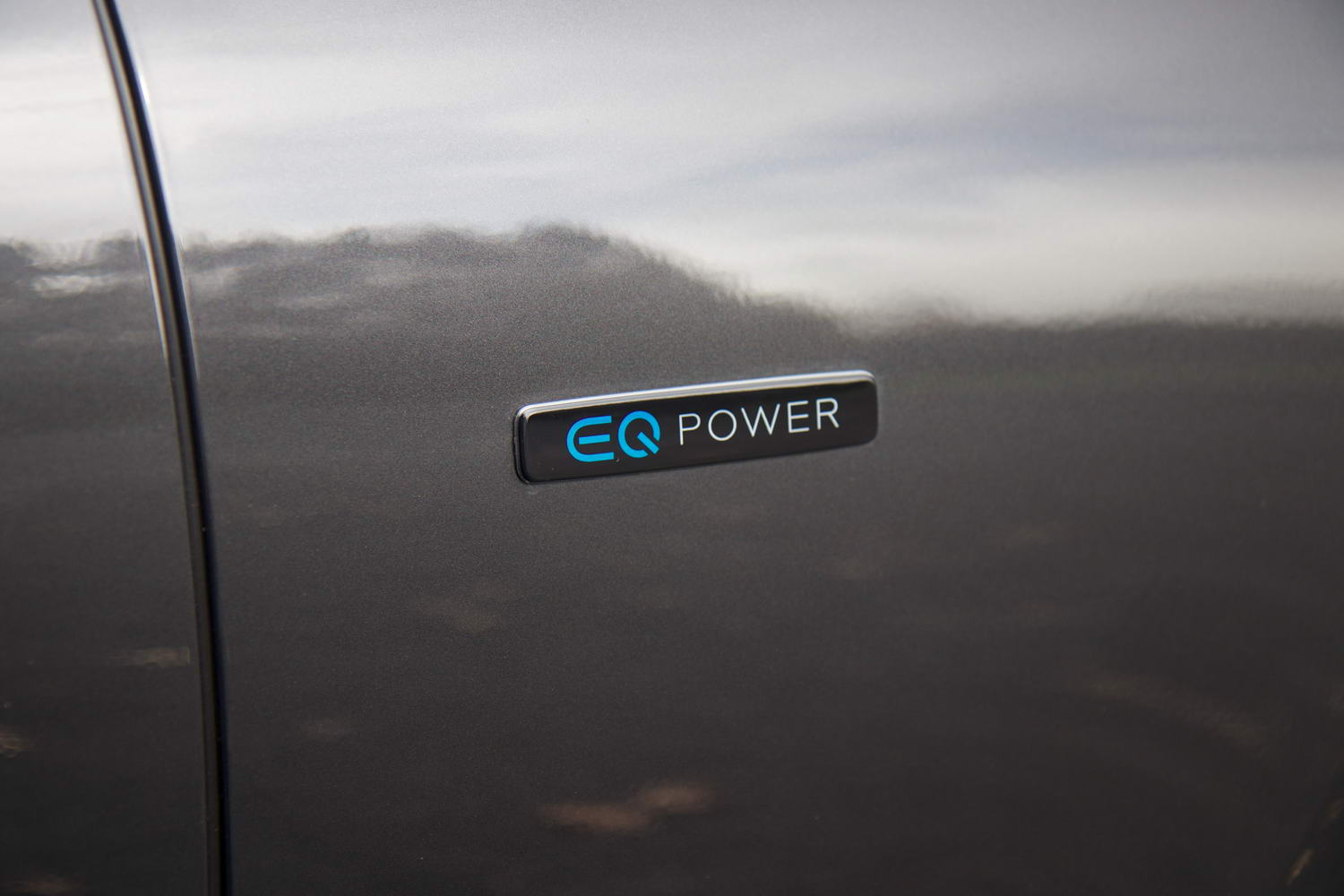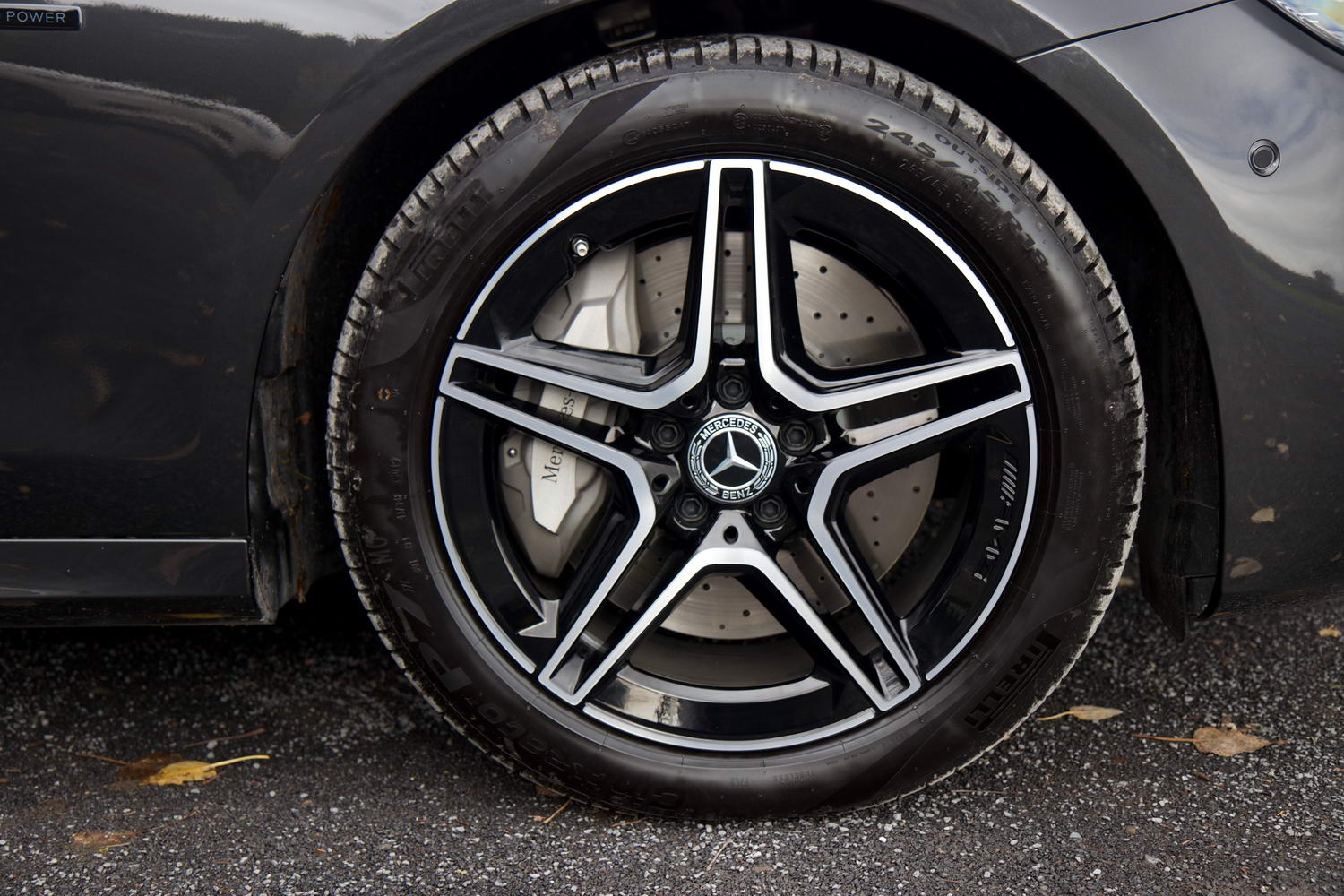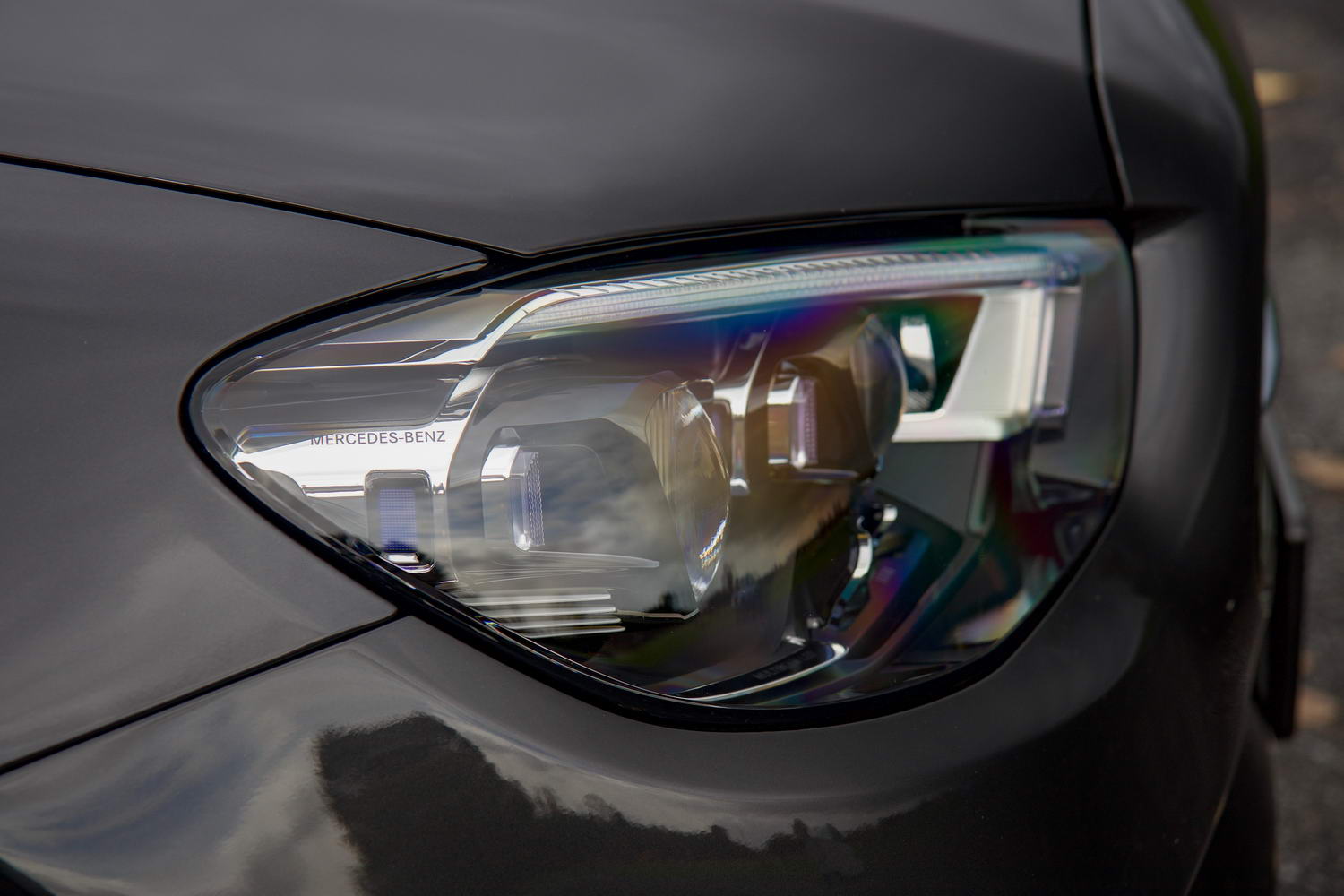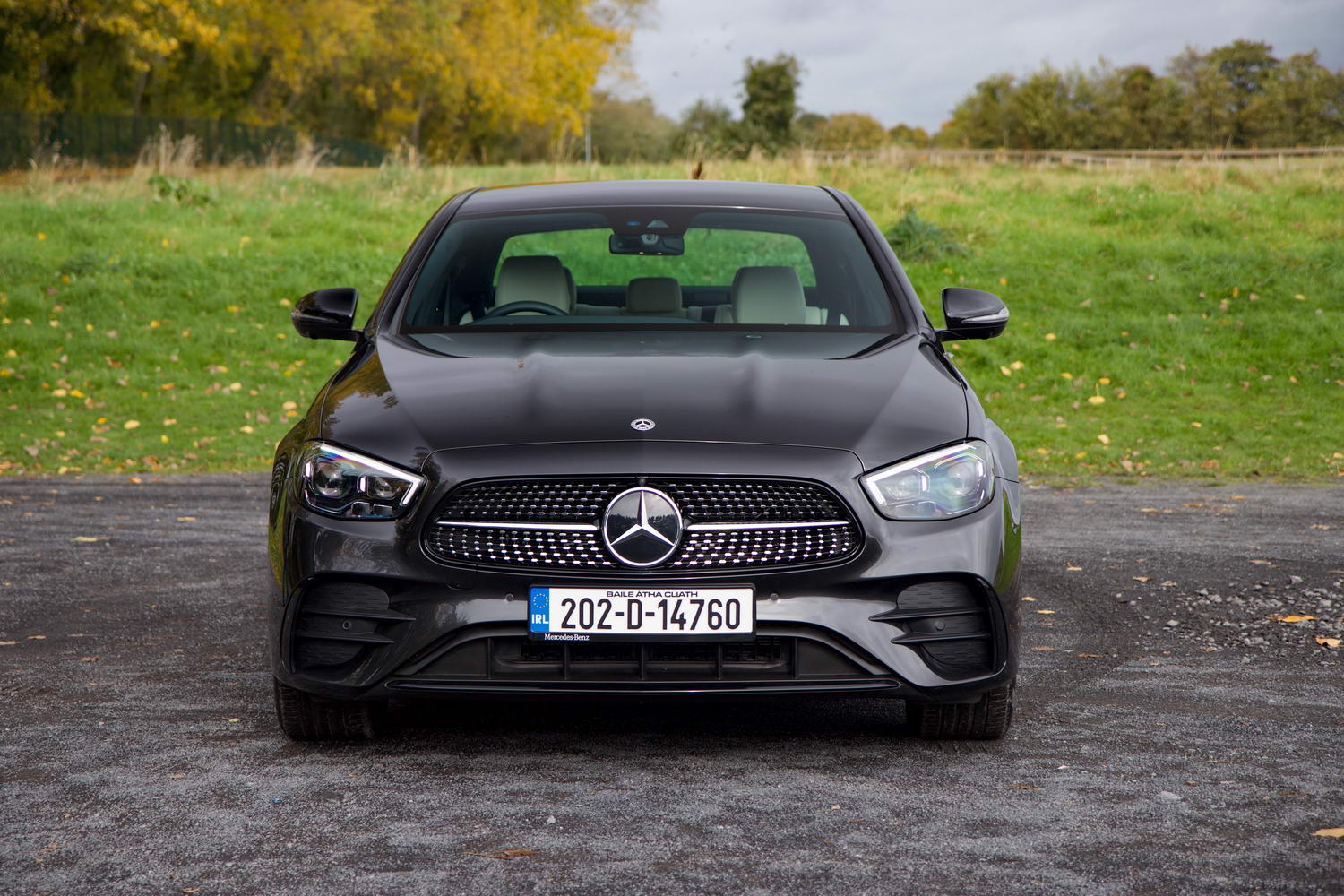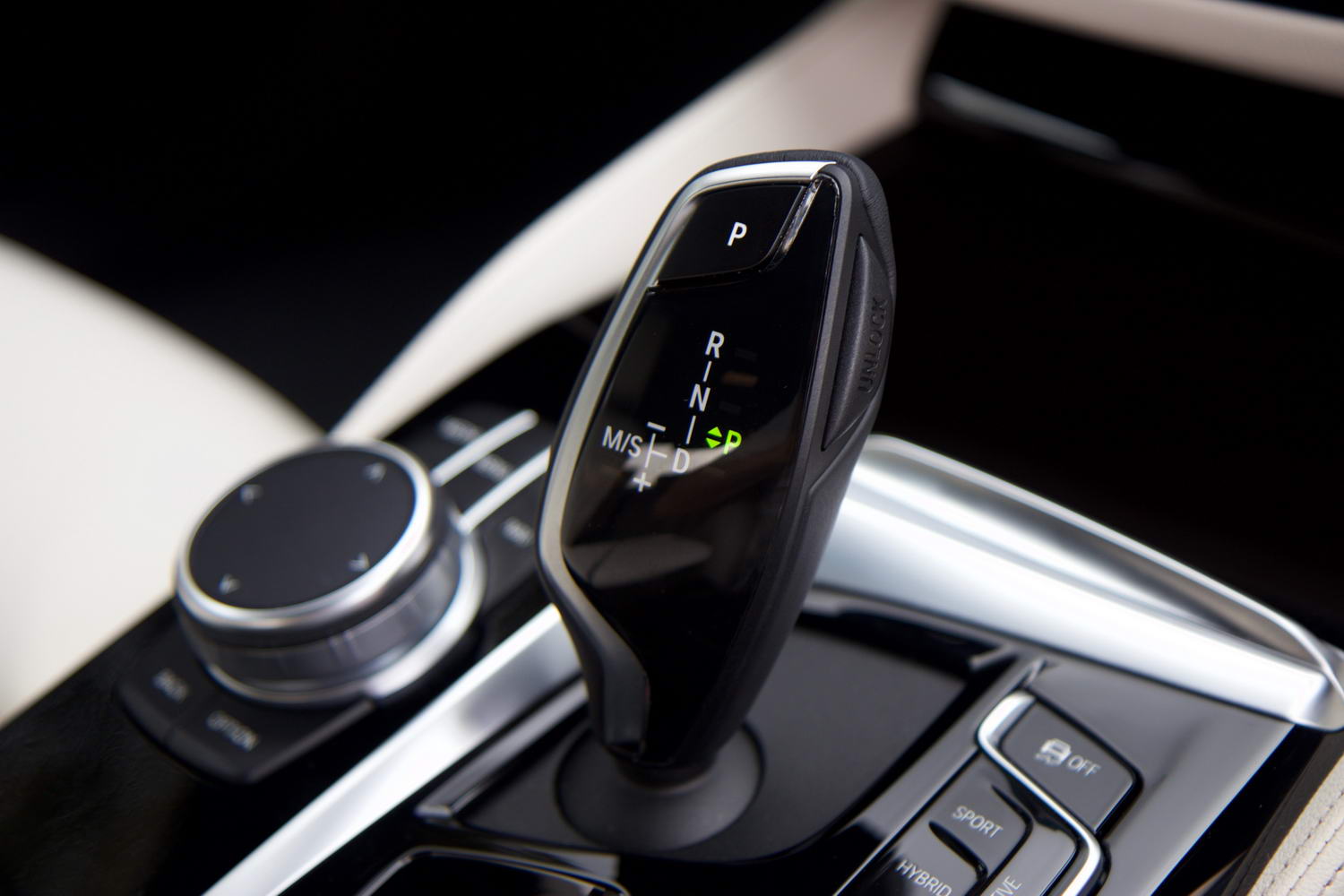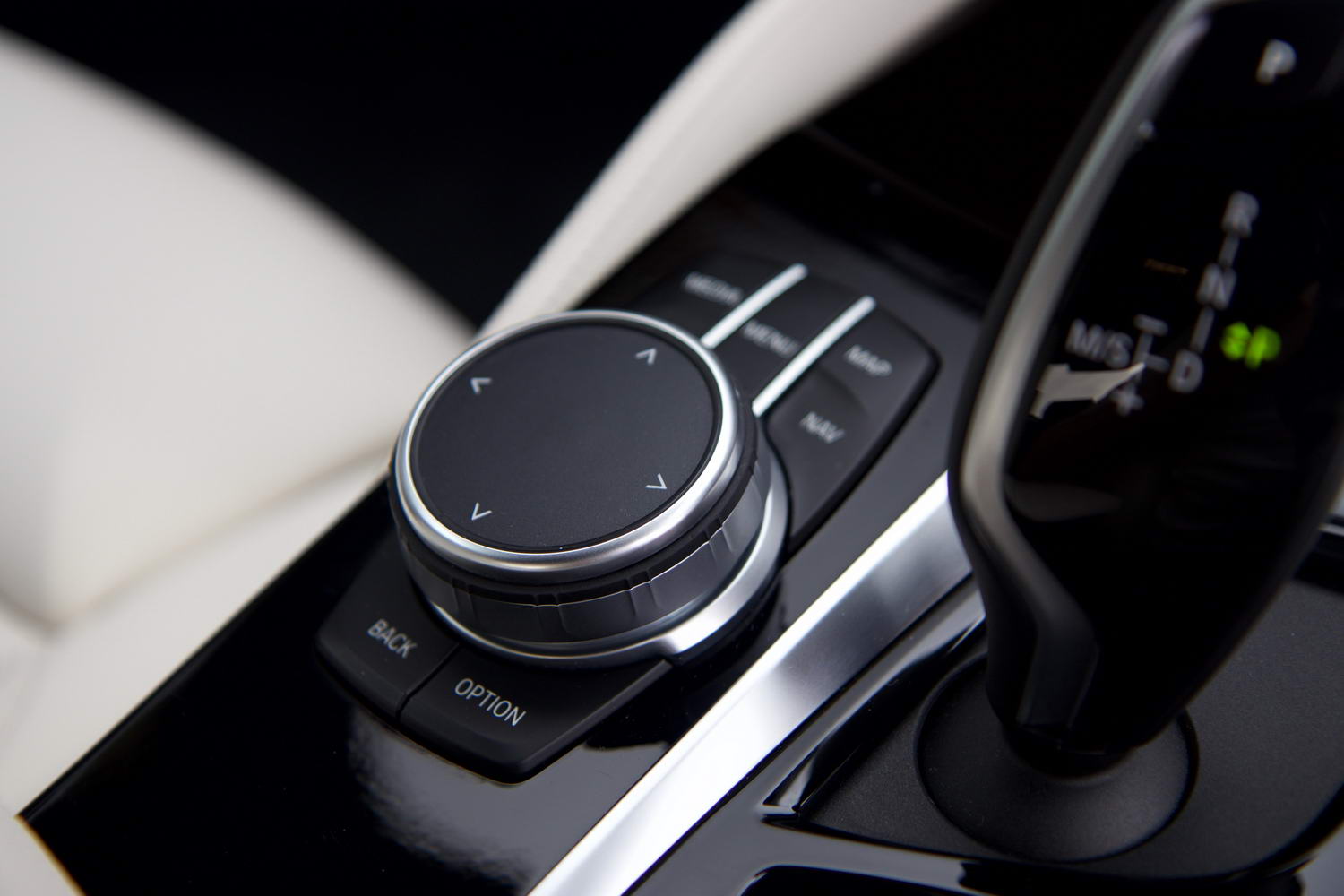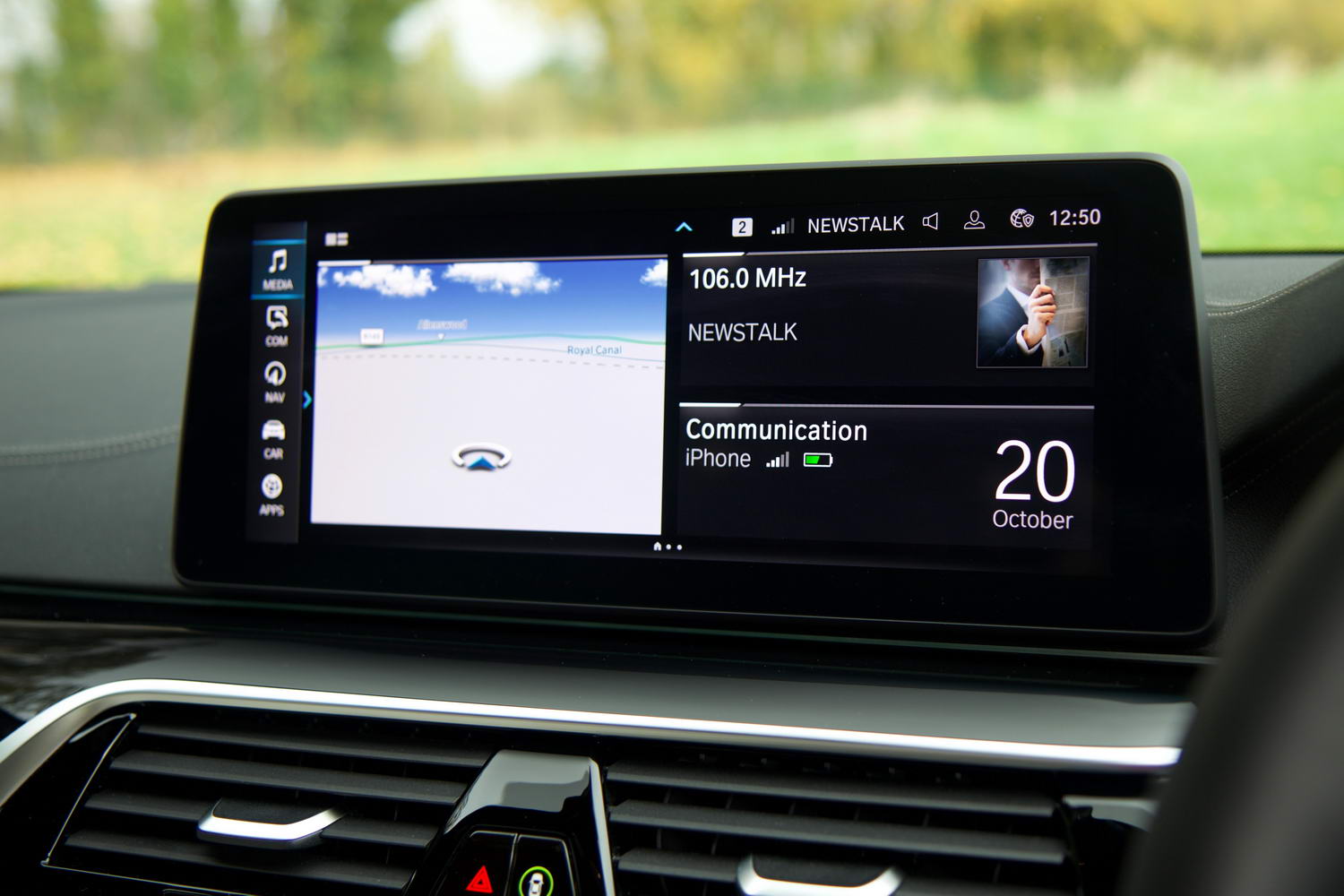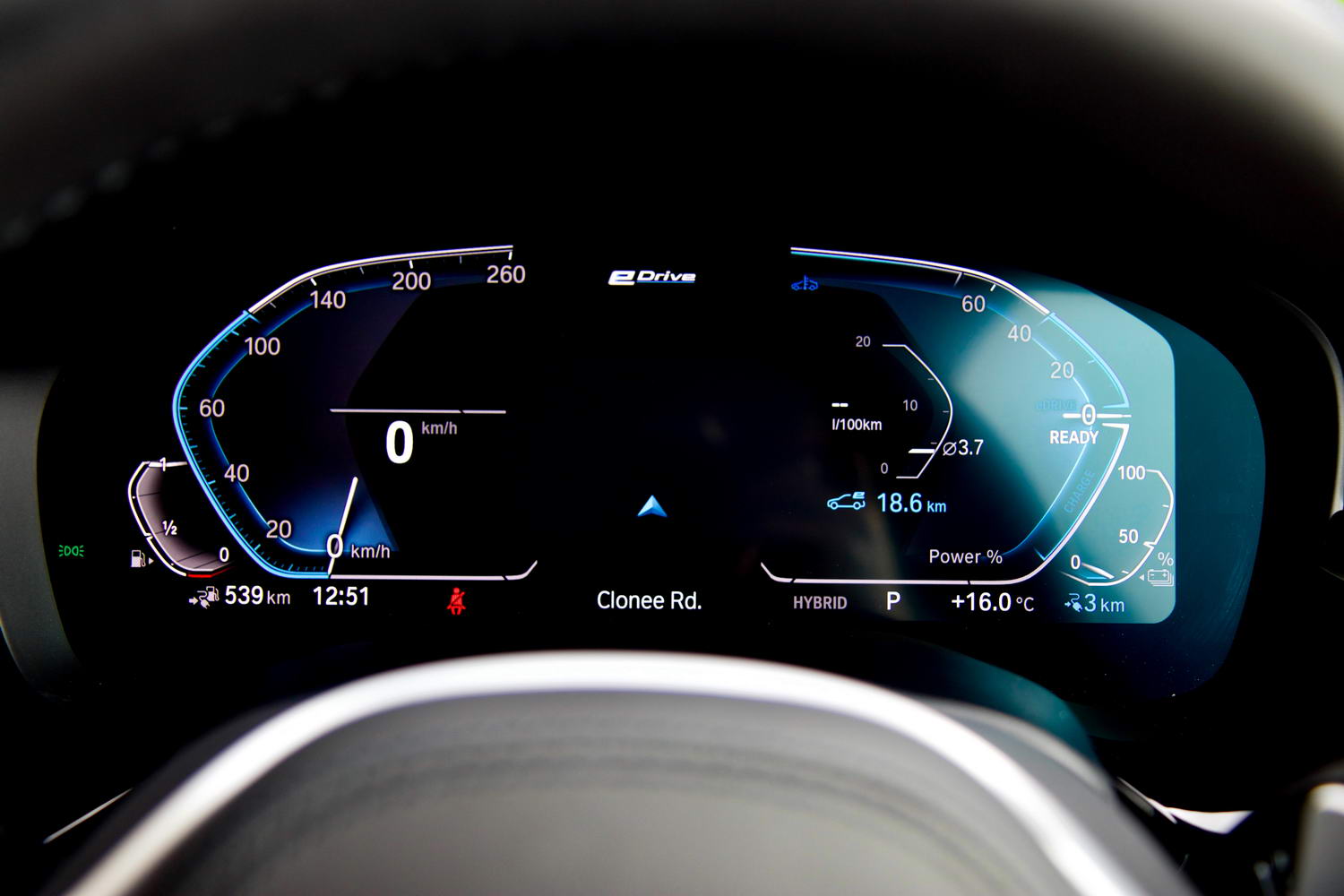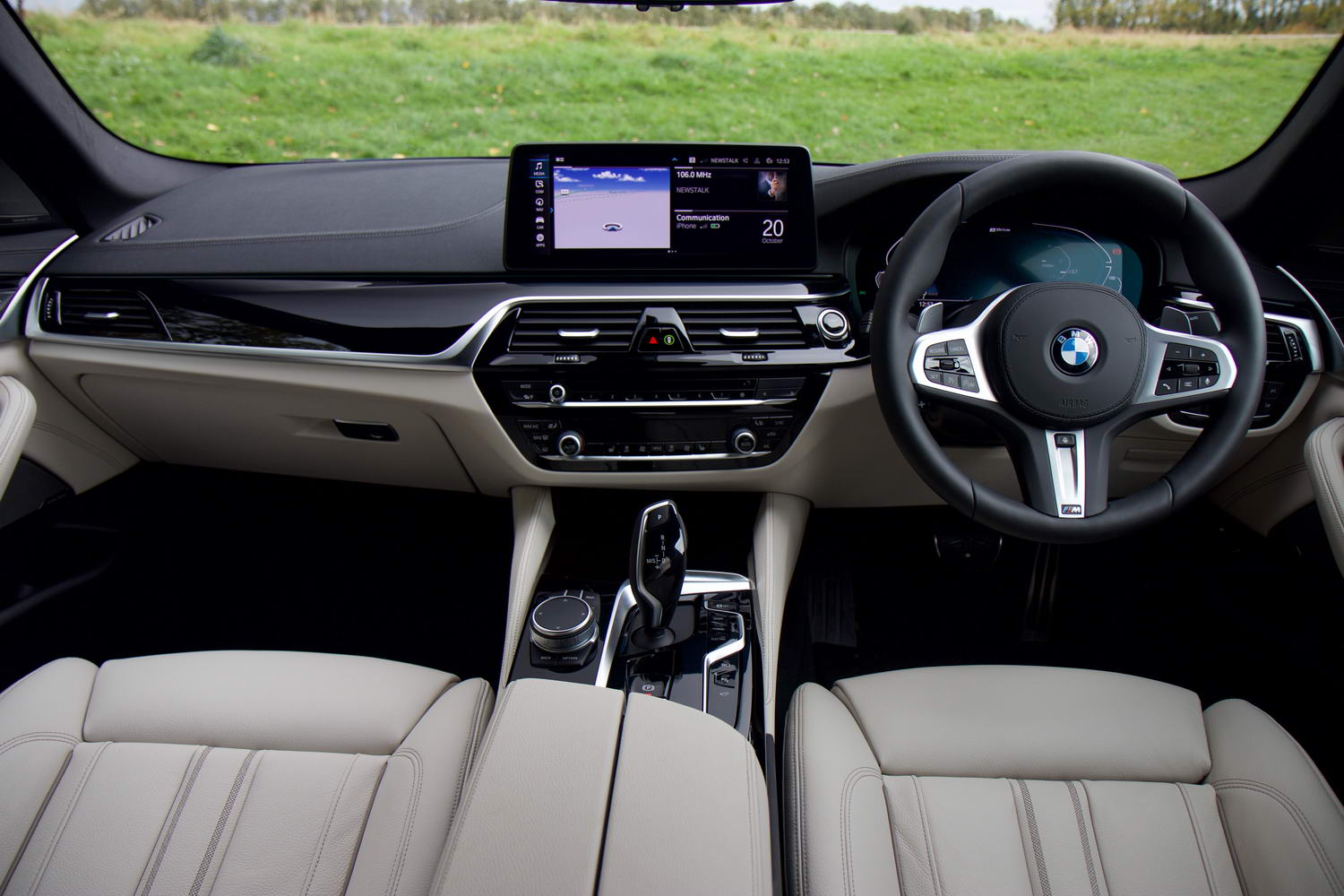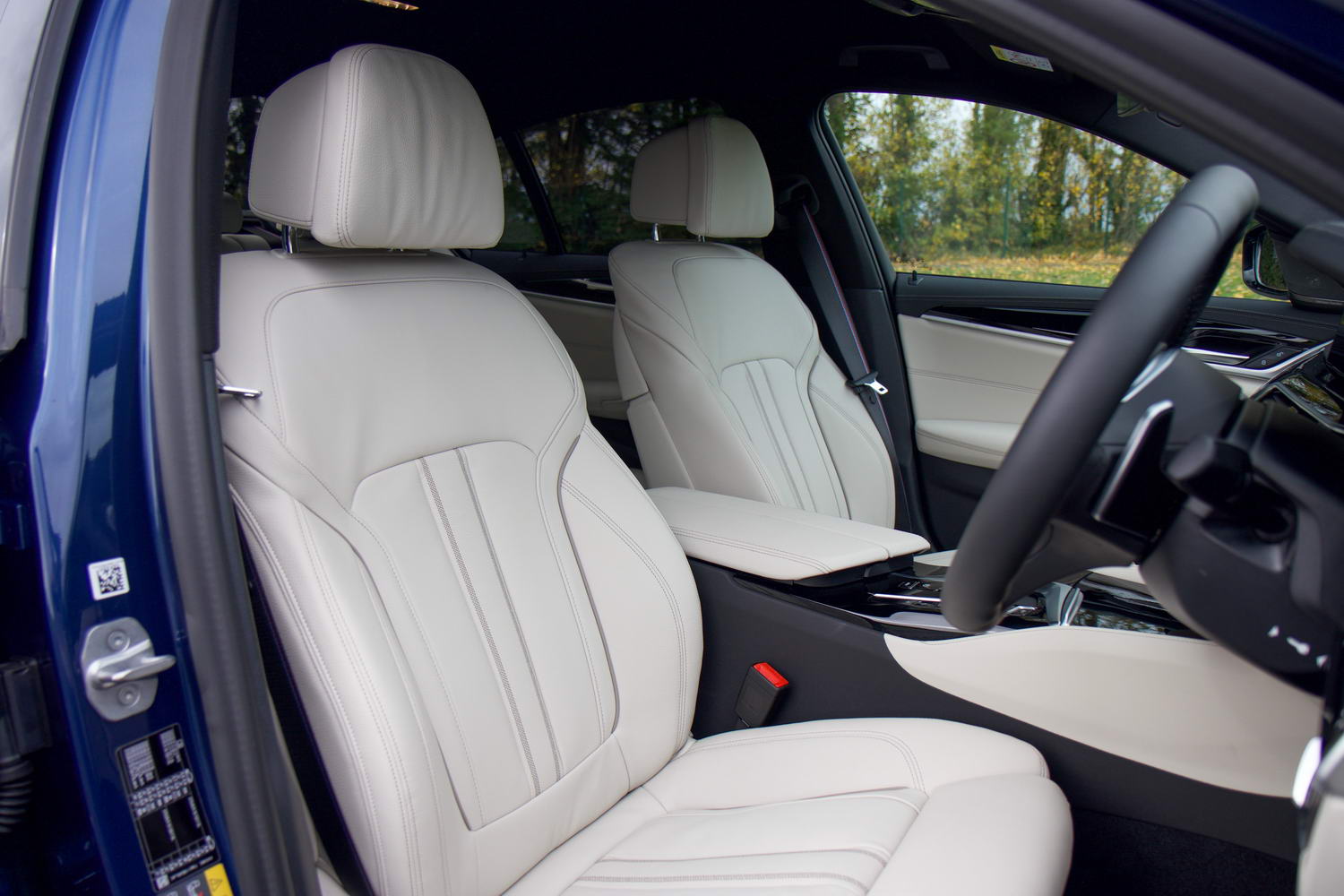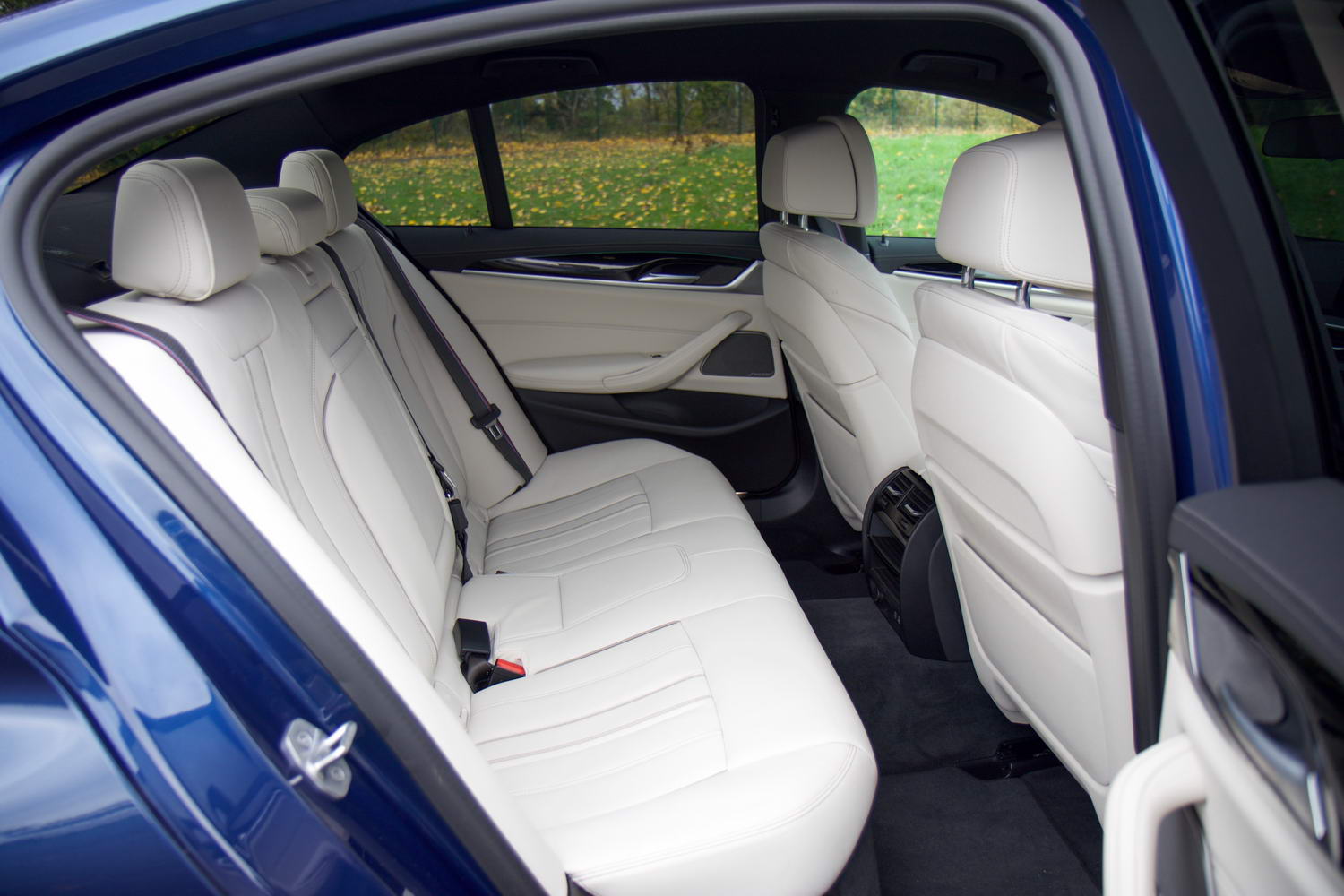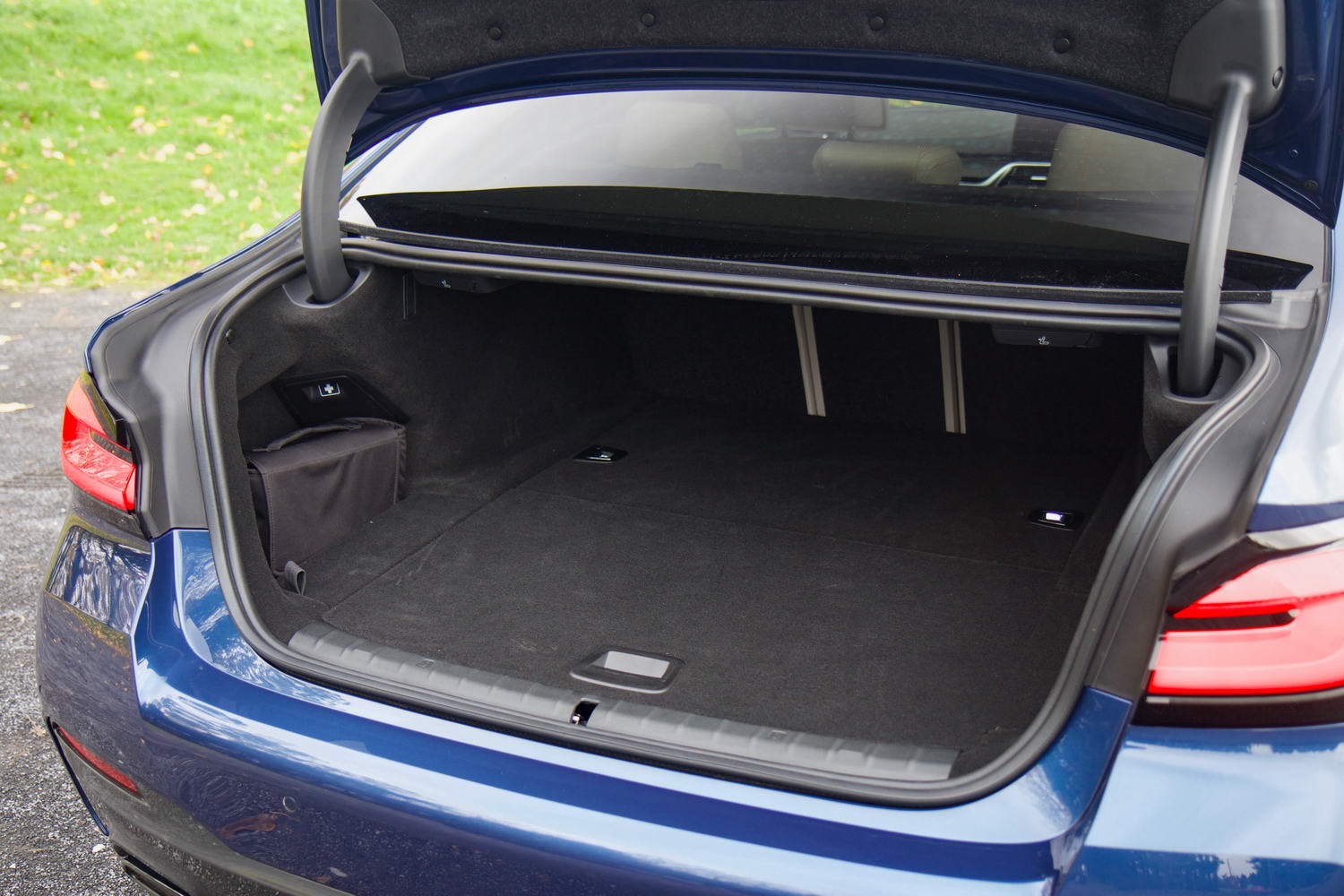BMW and Mercedes-Benz are old adversaries, and nowhere is this more tightly contested than in the executive saloon class. There are other good cars in the segment, but Battle Royale usually comes down to the 5 Series and E-Class. For over a decade now, the diesel versions of these cars have slugged it out for customers and the top spot on the podium. Indeed, for longer than that, these models have been the best-selling cars in their respective ranges in Ireland. That hints at how important the updated versions are.
But the automotive landscape is shifting faster than it has in a long time. There now appears to be monumental momentum towards full electrification of the car. And, while there are no fully electric variants in either the BMW 5 Series or Mercedes E-Class line-ups, there's plenty of electric assistance, most notably encapsulated by the plug-in hybrid options. The 5 Series comes in silky smooth 545e guise or as the 530e tested here. Both use petrol engines, and BMW doesn't offer a diesel-fuelled plug-in hybrid. Mercedes does both petrol and diesel plug-in hybrids, in the shapes of the E 300 e and E 300 de, respectively. The E 300 e would be a more precise rival to the 530e, obviously, but we didn't have access to one for this test. Nonetheless, this should still make for an interesting comparison.
In the Metal
From an aesthetic point of view, this twin test is well-timed, as both the BMW 5 Series and Mercedes E-Class have just recently been launched in mid-life update guise. That means the usual round of tweaks, such as new lights, grilles, wheels and colours. Interestingly, the revised front-end of the E-Class, with its smaller lights and larger grille, makes it look like a more compact car from that angle, while the darkened lenses and new LED graphic of the back lights on the 5 Series give it more than a hint of the BMW 3 Series. Thankfully, though BMW did widen the radiator grille, it hasn't gone the route of some of its latest creations, so it remains a handsome car.
The same can be said of the E-Class, though parked together here, the 530e is possibly the more attractive of the pair, due to its specification. That's mostly due to the M Sport Pro option, which brings with it those stunning 20-inch alloy wheels, more black detailing than standard (including on that front grille) and a sliver of a boot spoiler. The end result is a more menacing looking 5 Series with a much more purposeful stance. In comparison, the E 300 de shown here looks like it's on stilts, despite the 'AMG Line Exterior' specification. In isolation it looks attractive, but its 18-inch wheels appear small next to the BMW's and, naturally, they leave more space between them and the body. Even without the M Sport Pro pack, the 5 Series should edge it, as it comes with 19-inch wheels as standard on the M Sport model.
Mercedes fights back with an exquisite interior, though there really isn't a lot between them in terms of space, quality, equipment and technology. It's likely to come down to personal preference. As part of the recent facelift, all versions of the E-Class now come with digital instruments, which sits behind an attractive surface, flush with the centrally mounted touchscreen. Once you learn your way around the various sub-menus, it's superb to use and lovely to look at. We really like how customisable the appearance of the instruments is, too.
The newest aspect of the cabin, however, is the steering wheel, which looks suitably high-tech. The rim now uses capacitive sensing to ensure the driver is in control, even when the adaptive cruise control etc. is operational. The switchgear on the wheel has also been redesigned, but I must admit that I prefer the old car's touch-sensitive thumbpads. The BMW's steering wheel is incredibly conventional in comparison, but all the buttons are well-damped of course. We're not huge fans of the BMW digital instrumentation, however, as it's difficult to read at a glance and isn't notably customisable. Still, BMW's operating system is top-notch, with useful voice operation and its iDrive click-wheel rotary controller allowing a tactile alternative to relying on the touchscreen.
There's nothing to separate the cars in the rear seats, where there's good space for adults in the outer two chairs. The base is wide enough for a third to fit in the middle, but large transmission tunnels mean they need to put their feet to the side, impinging on the other passengers' space. Glance at the tech specs below and you'll expect there to be precious little difference between these cars in the boot, too, but you'll get a shock when you open them up. The BMW's looks normal enough, though it holds 120 litres less than an equivalent 520d. The floor is flat and there's plenty of room under it for charging cables and more. In contrast, the E 300 de's boot has an horrendous big step in it, making it appear much less spacious and useful. It turns out to be 40 litres smaller in capacity than the BMW's (though 160 litres smaller than a regular E-Class's), but it's a very strange shape, strange enough to potentially put some buyers off before they've even considered a test drive...
Driving them
Depending on how you specify these cars, their official electric range is in and around 50 kilometres when the batteries are fully charged. The battery in the E-Class is of a slightly higher energy capacity (13.5kWh vs. 12kWh), but the 5 Series is more efficient according to the official figures - at 13.8-14.9kWh/100km vs. 15.5kWh/100km. That's probably a lot to do with weight, as the E 300 de is about 150kg heavier than the 530e.
That weight penalty blunts the E 300 de's performance, too, relatively speaking. Working to their maximum, its diesel engine and electric motor produce up to 306hp and 700Nm of torque, which are substantial numbers by any measure. That results in a 0-100km/h time of 5.9 seconds, though the car doesn't feel as fast off the line as that time suggests. Nonetheless, it's impressive in the mid-range, when you're just ambling along, where all that torque nonchalantly accelerates the car forward with seemingly no effort. That's just as well, as the diesel engine isn't the most melodic when extended. The nine-speed automatic gearbox is super-smooth, however.
The BMW's powertrain manages peaks of 292hp and 420Nm, so it has much less torque at its disposal. Even so, it records the same 0-100km/h time, which shows the effect of the E-Class's extra weight. And, while the 530e is never quite as effortlessly torquey, neither are you ever left wanting more from it. Indeed, if you put it into its Sport mode, the 'Xtraboost' function maximises performance from the engine and motor to make it feel ludicrously responsive to throttle inputs - almost too much so. As ever with BMW's eight-speed automatic gearbox, it offers a variety of modes, from really smooth by default to rapid-fire changes at elevated engine speeds if that's what you're into. Through all this it's worth mentioning that the BMW's petrol engine is notably smoother and quieter when it does kick in than the diesel engine in the E-Class.
In terms of fuel economy, the laughably huge mpg figures quoted by BMW and Mercedes for these cars are only achievable with fastidious plugging in to charge up the batteries. And this is where it should become clear that these cars are not direct rivals. Or rather, they should appeal to different types of drivers. With its efficient diesel engine, the Mercedes will be more economical on a long run where it's not practical to keep stopping to charge up the battery pack. If anything it's ahead of its time for Irish drivers, as there are no zero-emissions city zones in place, so there's no incentive for its owners to save the battery charge for use in town, for example, other than to help improve air quality of course. The thing is, the BMW isn't significantly less efficient when it has to rely solely on its petrol engine.
From behind the wheel, there's usually little to differentiate the 5 Series and E-Class. They're both accomplished rear-drive luxury saloons that are more than a little fun to drive when the mood takes you. In these guises, however, the chassis of the BMW feels better resolved, mixing decent dynamics with excellent comfort and refinement. The Mercedes is still a good car, and more capable than anyone needs, but it's not as sharp on the road as the non-hybrid E-Class.
What you get for your money
We're going to assume that the €2,500 SEAI grant for plug-in vehicles will still apply to these cars come 2021, though they will no longer be eligible for the €5,000 VRT rebate. Factoring all that in, it appears that the E 300 de starts at €60,220, in the 'AMG Line Exterior' specification we have here (though this test car has nearly €10,000 of options added to it, including, disappointingly, €717 for smartphone integration). The petrol-fuelled alternative mentioned above, the E 300 e, starts from €58,325 after the grant, while the entry-level E-Class, the E 200 d, costs from €52,500.
It doesn't appear that BMW Ireland's website is showing 2021 pricing as yet, but for comparison's sake, the 530e starts at €59,739 - in demure SE specification. The M Sport Pro car you see here, loaded with options, weighs in at over €80,000. These prices take into account the SEAI grant. The entry-level 5 Series is the 520i, from about €51,000, while the popular 520d starts at about €52,000.
For a given price, the E-Class and 5 Series are largely comparable in terms of the standard equipment included.
Summary - Shane O' Donoghue
As stated at the outset, the petrol-fuelled Mercedes E 300 e would make for a better comparison with the BMW 530e. This twin test has served to reveal that the diesel-electric E 300 de variant is quite compromised and perhaps not a car for many Irish buyers, at least not right now. In the not too distant future, zero-emissions zones could be introduced into Ireland's cities. If they are, then a car like the E 300 de that can economically drive up and down the motorway network without stopping regularly for recharging, yet still run in purely electric mode when required, will make a lot of sense. For now, its extra weight, smaller boot and higher cost seem pointless next to the already excellent standard diesel versions of the E-Class. Or, if you don't need the long-distance economy of diesel, and you want some electric running potential, stick with the E 300 e instead.
The BMW 530e feels a lot less compromised than the E 300 de, but it won't be quite as economical on longer motorway runs. Nonetheless, it feels like a better car in many respects.
Aside from the plug-in hybrid powertrains, the 5 Series and E-Class remain fearsome foes, almost inseparable in terms of capability. They're both stylish, luxurious, of high quality and crammed with the latest technology and safety. Which you choose is likely to come down to personal opinion.
Summary - Dave Humphreys
As already mentioned, there is remarkably little to separate these cars. Both offer excellent packages and personal taste will come into the final decision to a degree. The Mercedes edges ahead in terms of the interior thanks mainly to the added sense of space due to the layout of the dashboard. Nonetheless, while the MBUX infotainment system looks fantastic with the dual-screen setup, I still found the BMW's iDrive system to be quicker and more intuitive to use.
The added smoothness of the BMW's petrol engine is another plus, though Mercedes does offer a similar setup. On battery power there's little to separate them and, as we've mentioned plenty of times before, you do need to be dedicated to plugging these cars in if you want to exploit the potential fuel saving, while reducing local pollution. When it comes to driving, the differences are a bit clearer. The BMW 530e's handling and on-road performance cater more for the driving enthusiast, those who appreciate and look for how a car handles, whereas the E-Class is much more about overall refinement, something that it doesn't fail to deliver on. The slightly softer ride in the Mercedes, along with its sound insulation, makes it sublime at covering longer distances. However, as a keen driver, the BMW just pips it in this test.
BMW 530e Specs
Model tested: BMW 530e M Sport Pro
Hybrid system: 2.0-litre turbocharged four-cylinder petrol engine, 80kW electric motor and 12kWh lithium-ion battery
Transmission: eight-speed automatic, rear-wheel drive
Body style: four-door, five-seat saloon
WLTP CO2 emissions: 41g/km
Motor tax: €140 (from 2021)
Electric Range: 51 kilometres (WLTP)
Fuel economy: 156.9mpg (1.8 litres/100km)
Top speed: 235km/h
0-100km/h: 5.9 seconds
Power: 292hp
Torque: 420Nm
Boot capacity: 410 litres
Safety: Euro NCAP rating for BMW 5 Series
Mercedes-Benz E 300 de Specs
Model tested: Mercedes-Benz E 300 de AMG Line Exterior
Hybrid system: 2.0-litre turbocharged four-cylinder diesel engine, 90kW electric motor and 13.5kWh lithium-ion battery
Transmission: nine-speed automatic, rear-wheel drive
Body style: four-door, five-seat saloon
WLTP CO2 emissions: 33g/km
Motor tax: €140 (from 2021)
Electric Range: 51 kilometres (WLTP)
Fuel economy: 201.8mpg (1.4 litres/100km)
Top speed: 237km/h
0-100km/h: 5.9 seconds
Power: 306hp
Torque: 700Nm
Boot capacity: 370 litres

